The Samsung QN92/QN90 is a premium device that will satisfy even the most demanding users. Thanks to MiniLED technology, the television offers excellent contrast and high brightness, making movie watching an experience reminiscent of a trip to the cinema. The Tizen system ensures quick and intuitive use, significantly enhancing everyday usage. Users looking for traditional broadcasting will not be disappointed — the QN92/QN90 stands out with superb processing capability for lower-quality materials, translating to better visual experiences. The Solar Remote is an innovative addition that can take control of other devices, such as a satellite decoder, eliminating the need for multiple remotes. Notably, the 144 Hz panel provides exceptionally smooth motion, an essential feature for gamers. Additional gaming features like low input lag and the game bar make the QN92/QN90 an ideal choice for gaming enthusiasts. An additional advantage is the Auto Motion Plus Game feature, which increases image smoothness without a significant rise in input lag, making 30 frames look like 45, and 60 Hz like 90 Hz. This solution allows gamers to enjoy smoother motion without sacrificing gameplay comfort. With high brightness, multiple dimming zones, and MiniLED (Neo QLED) technology, the QN92/QN90 delivers stunning visuals during the day and at night, though slight halo effects may occasionally appear. Wide viewing angles make it a great choice for large living rooms, and the colours, supported by QLED coating, are vibrant and juicy. After additional calibration, the television presents even better quality, making its use a truly pleasant experience.
- Matching (Score)
- Our verdict
- TV appearance
- Where to buy
- Contrast and black detail
- HDR effect quality
- Factory color reproduction
- Color reproduction after calibration
- Smoothness of tonal transitions
- Image scaling and smoothness of tonal transitions
- Blur and motion smoothness
- Console compatibility and gaming features
- Input lag
- Compatibility with PC
- Viewing angles
- TV efficiency during daytime
- Details about the matrix
- TV features
- Apps
- Playing files from USB
- Sound
Samsung Neo QLED QN90D / QN92D vs Samsung QN85F
Direct compare
Check the best price offer:
Samsung Neo QLED QN90D / QN92DNeo QLED / QN92D / QN90D
QN85F

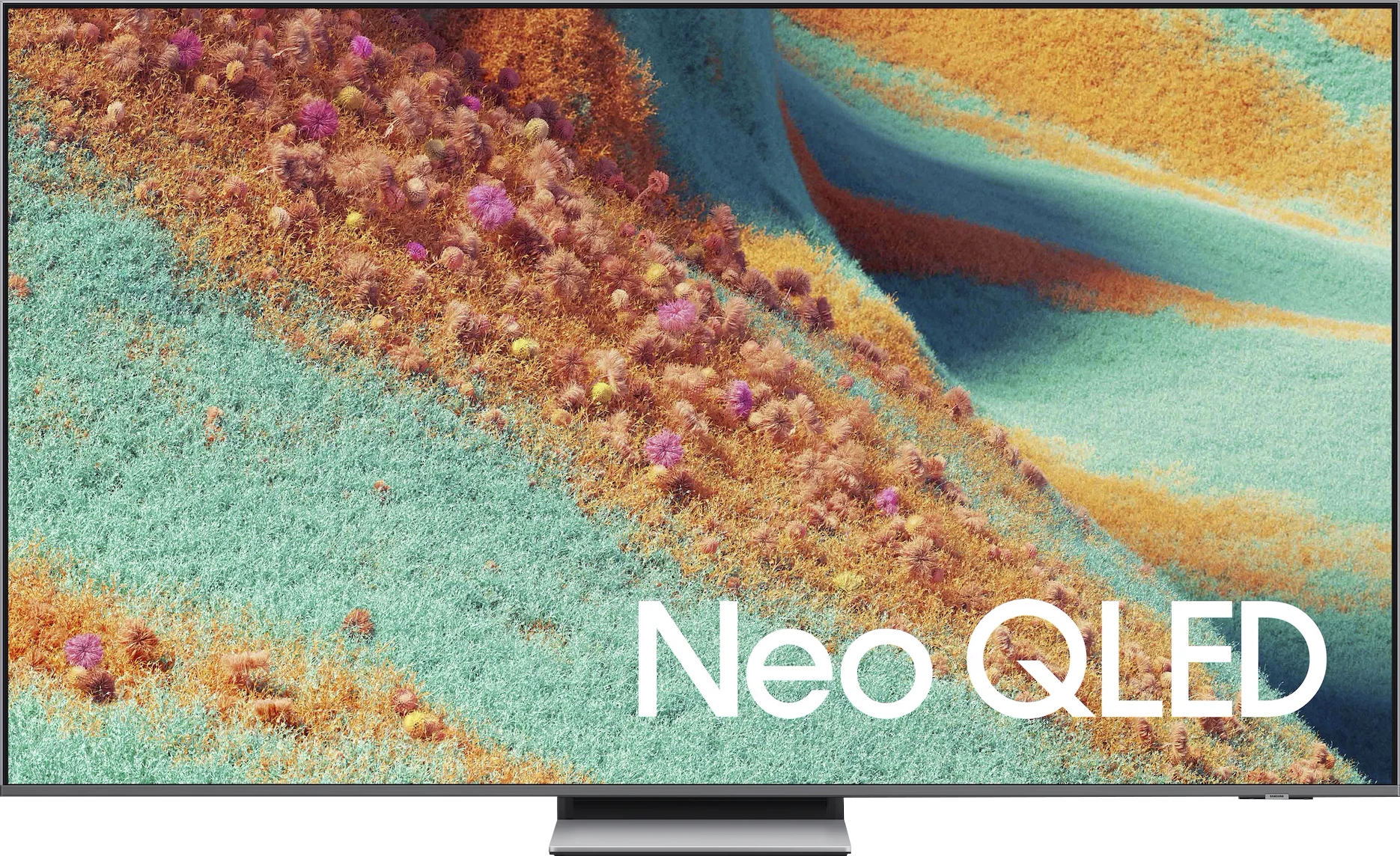
Panel type: LCD VA (wide viewing angle)
Resolution: 3840x2160
System: Tizen
Model year: 2024
Complete the survey to find out the result

Panel type: LCD VA
Resolution: 3840x2160
System: Tizen
Model year: 2025
Complete the survey to find out the result

Overall rating
7.8
7.6
Movies and series in UHD quality
7.9
7.5
Classic TV, YouTube
7.9
7.2
Sports broadcasts (TV and apps)
7.7
7.0
Gaming on console
9.1
8.7
TV as a computer monitor
8.6
8.4
Watching in bright light
6.4
6.9
Utility functions
7.4
7.3
Apps
8.7
8.7
Sound quality
6.9
7.6
Complete the survey to find out what fits your preferences
Advantages
High brightness
Good contrast
Intuitive Tizen operating system
Great for gamers and sports fans (HDMI 2.1, 144Hz, low input lag)
Wide viewing angles - unusual for VA panels
High HDR brightness (even 1700–1800 nits)
Very good contrast and deep blacks
2 times higher number of dimming zones than its predecessor (55")
144 Hz panel with VRR and ALLM support
Original Game Motion Plus feature – a unique smoother in gaming
Low input lag
Satin finish of the panel works great during the day combined with high brightness
Extensive Tizen platform: with AirPlay, SmartThings, and convenient solar remote
Beautifully designed base. Hybrid – can be a central stand or side legs
Solid sound with pleasant bass and Dolby Atmos support
Disadvantages
No recording feature
No DTS format support - this may be problematic for Blu-ray users
No support for Dolby Vision and DTS:X
No recording function from built-in tuners and PiP
Issue with HEIC files in the player
No proper support for HGiG* in gaming mode
*This seems to be an update error that we hope Samsung will quickly fix. We are monitoring the situation for you continuously.
Our verdict
The Samsung QN85F is a television that perfectly demonstrates the purpose of the Neo QLED line. On one hand, it has everything a modern user expects – high brightness, excellent smoothness, and full support for gamers. On the other hand, it's still an LCD, which means the technology comes with certain compromises. The question is whether these compromises actually hinder everyday use? In practice, it's hard not to be impressed with how the QN85F performs in HDR movies. A brightness level of 1700–1800 nits makes watching dynamic scenes truly convey the "HDR spark" that many competing TVs lack. The lighting effects in movies or series can literally overwhelm with intensity, while the TV does not lose detail and does not turn the whole image into a washed-out blur. This is exactly the kind of spectacular quality that viewers investing in a new screen are looking for. Gamers also have reasons to be pleased. (Well, maybe aside from one limitation related to HGIG.) There is support for 144 Hz, variable refresh rate VRR, and auto low latency mode ALLM. This is already a must-have feature in this class, but Samsung goes further and adds a unique feature called Game Motion Plus. Thanks to it, the image in games becomes smoother, resembling the effect of motion smoothing in films, but without a noticeable increase in lag. This solution truly distinguishes the QN85F from the competition. Adding to all of this is everyday convenience. The Tizen system is fast, stable, and full of apps that we actually use – from Netflix and Apple TV to YouTube and Disney+. Additionally, there is AirPlay support, an advanced SmartThings platform, and a remote that, instead of overwhelming us with dozens of buttons, provides simple control and quick access to the most important functions. This makes the QN85F a TV that you simply want to reach for every day. Of course, it’s possible to list its shortcomings. There’s no Dolby Vision, no USB recording, or PiP, and the viewing angles typical of VA panels won't impress if you sit at a large angle. But all of this pales in comparison to how versatile and refined the QN85F is. During the day, it performs excellently in bright rooms, in the evening it delivers cinematic emotions in HDR, and in games, it provides smoothness and low input lag that other models could envy. Overall, the QN85F is a TV that not only successfully continues the value tradition of its predecessor, the QN85D, but even enhances it with several strong points. It's a device that’s hard to describe in any other way than as a "safe choice" – one that will not disappoint in any scenario and is highly likely to meet the expectations of even the most demanding users.
TV appearance





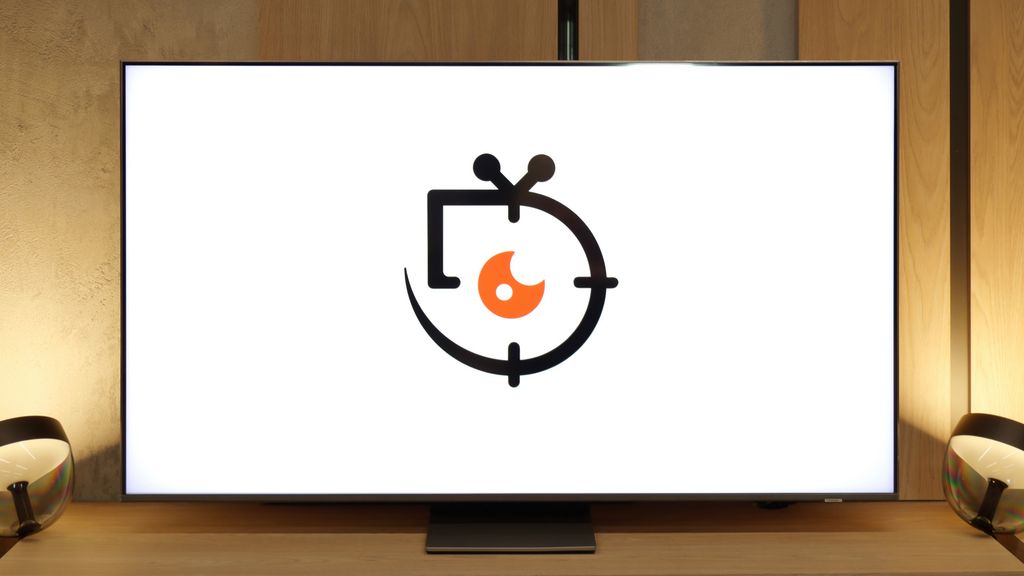
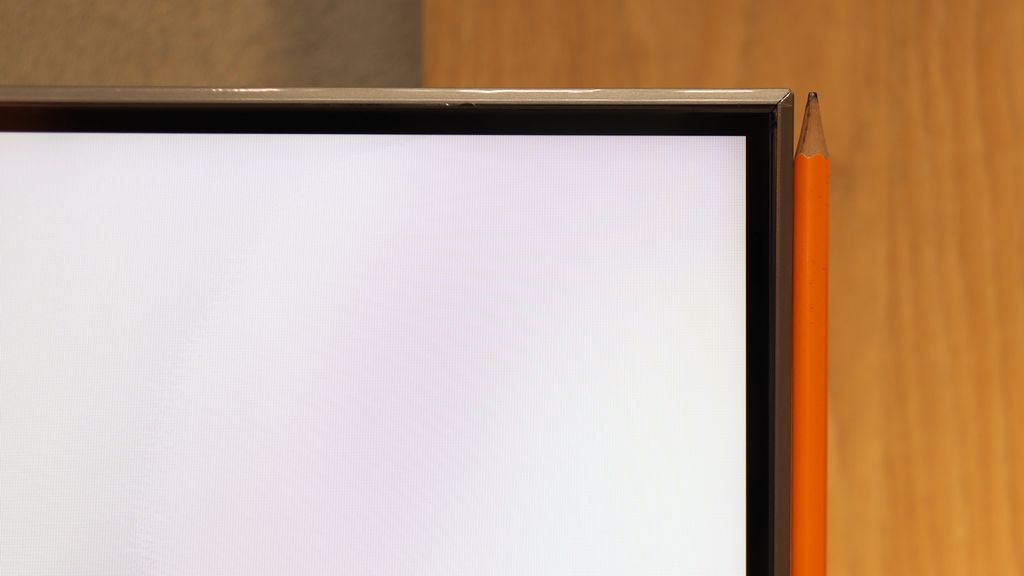
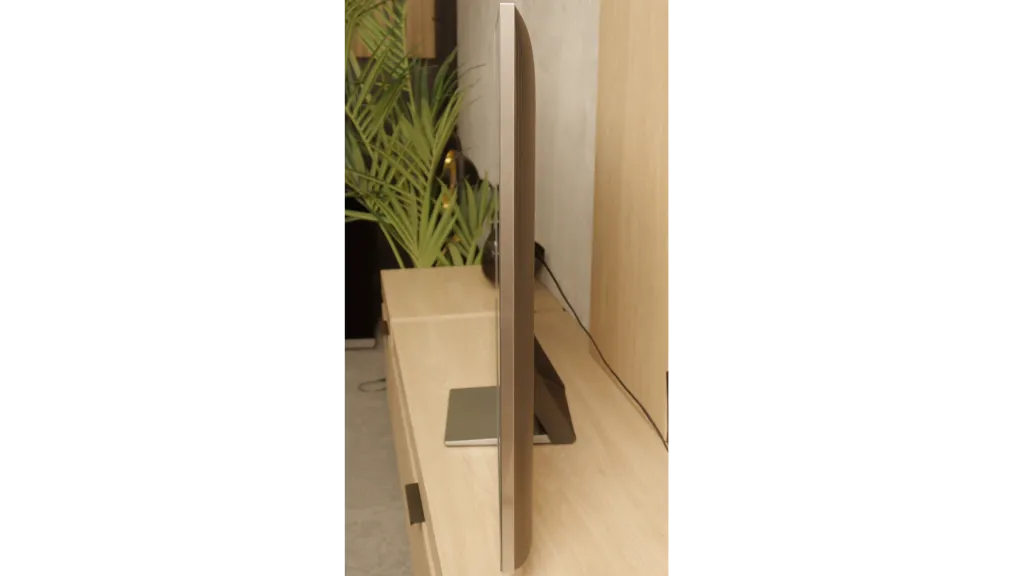
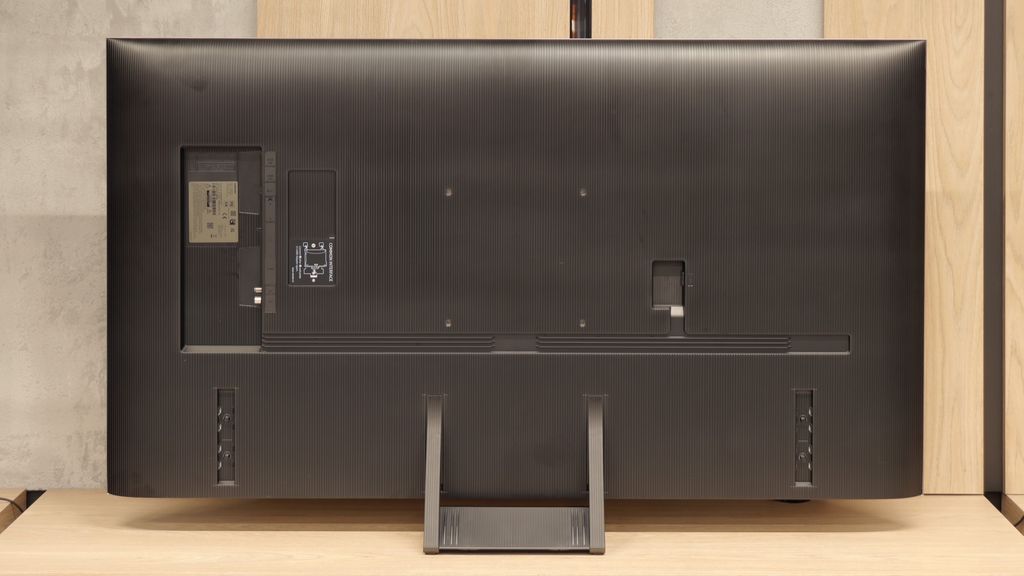
Contrast and black detail
7.9/10
7.5/10
Local dimming function: Yes, number of zones: 504 (36 x 14)
Local dimming function: Yes, number of zones: 240 (20 x 12)
Contrast:

Result
∞:1

Result
69,000:1

Result
∞:1

Result
5,500:1

Result
2,700:1

Result
101,800:1

Result
18,650:1

Result
47,050:1

Result
9,700:1

Result
4,350:1
Halo effect and black detail visibility:

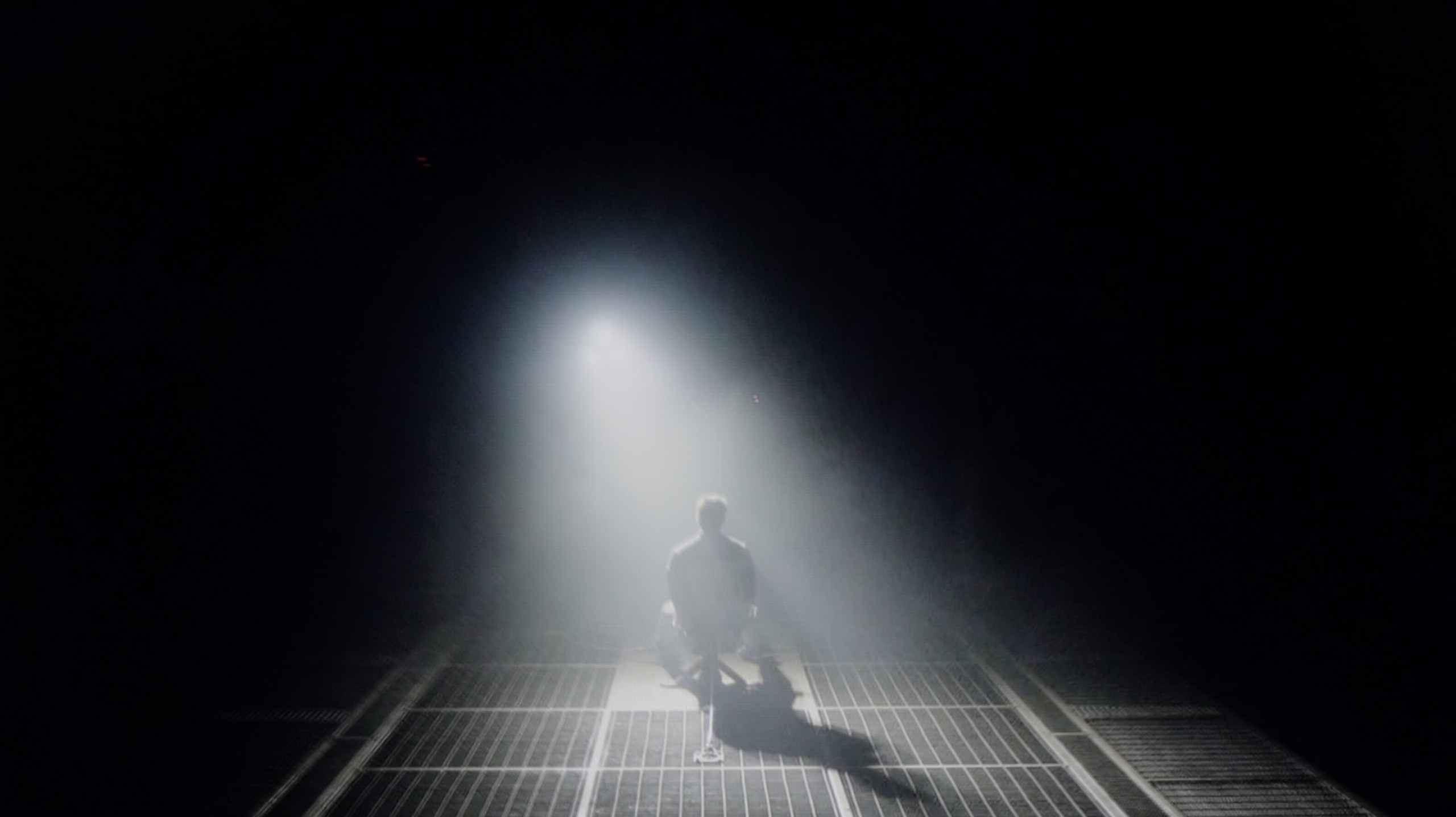
The Samsung QN92D ranks among the top models in the 2024 NeoQLED 4K (Mini LED) line from the Korean manufacturer. Although it doesn't feature as many dimming zones as its more advanced sibling, it still impresses with 504 zones in the 55-inch version. Paired with a VA panel, this setup delivers excellent contrast, making the QN92D stand out in the non-OLED category. Even in challenging scenes, such as those in Oblivion or Arrival, its near-infinite contrast can rival some of the best OLED TVs—an uncommon feat for LED-backlit displays.
However, Mini LED technology does come with limitations compared to OLED. For instance, the TV struggles with certain test patterns, likely due to its aggressive dimming algorithm. This occasionally causes the Mini LEDs to misjudge whether to highlight specific elements or maintain deeper black levels. Despite these minor drawbacks, the Samsung QN92D remains one of the top LCD TVs for contrast and black-level performance.
Our editorial team received a 55-inch model with a VA panel. In the case of NeoQLEDs, which are TVs with Mini-LED backlighting, size is incredibly important because the larger the screen, the more local dimming zones it can have. This directly translates to higher contrast. In the variant we tested, we counted as many as 240 dimming zones, which is twice as many as in last year's QN85D. Theoretically, such an increase should bring an equally impressive improvement in contrast. Unfortunately, practice showed something different – the QN85F offers results very similar to its predecessor. Yes, in some scenes with a lot of black or in areas where details in the highlights are crucial, there is progress, but it is not proportional to the number of zones. Mini-LED technology can be capricious, and sometimes around small, bright objects, there are subtle halos. This is a typical compromise that one must accept with such a solution. Nevertheless, the contrast in the QN85F is at a very high level and will easily satisfy most users, even the more demanding ones. However, we have the impression that Samsung could refine the algorithms controlling dimming because we know from experience that they can perform really well in other models.
HDR effect quality
6.7/10
6.9/10
Luminance measurements in HDR:

Result
1947 nit

Result
617 nit

Result
738 nit

Result
271 nit

Result
1479 nit

Result
1248 nit

Result
860 nit

Result
1093 nit

Result
465 nit

Result
957 nit
Scene from the movie “Pan” (about 2800 nits)


Scene from the movie “Billy Lynn” (about 1100 nits)


Static HDR10


Dynamic: HDR10+
Dynamic: HDR10+


HDR luminance chart:
Samsung QN85F
HDR luminance
Samsung Neo QLED QN90D / QN92D
HDR luminance
During synthetic tests, the Samsung QN92D demonstrated remarkable brightness capabilities, reaching an impressive 2000 nits—on par with top models in the market. This level of brightness puts it at the forefront for displaying HDR content, where high brightness is essential. But how does it fare in real movie scenes? Under favourable conditions, such as the light-drenched opening and closing scenes of Life of Pi, the QN92D nearly replicates its lab results, delivering striking brightness levels. However, performance changes in scenes featuring small, bright objects against dark backgrounds, such as the fourth scene in Sicario. Here, brightness levels drop significantly, with maximum values capping at around 600 nits.
As with contrast, these limitations are due to the aggressive local dimming algorithm, which aims to reduce the "halo" effect around bright objects in dark scenes but often sacrifices overall brightness. Consequently, while the TV excels in scenes with abundant light, it faces challenges maintaining brightness with smaller, bright elements on dark backgrounds.
Although the more than double number of dimming zones compared to its predecessor has not translated into a spectacular jump in black levels and contrast, we definitely felt it in the HDR effect itself. The QN85F is up to 50% brighter than last year's model, making a huge impression in dynamic scenes. The peak brightness can reach nearly 1700–1800 nits, which is truly impressive in this Mini-LED class. The best part is that almost regardless of the scene being viewed, the HDR effect remains strong and vibrant. In four out of five test scenes, the brightness was around 1000 nits, a level that in most cases allows viewers to feel the true magic of this format. Of course, in scene number 4 from the movie Sicario 2, the limitations of Mini-LED technology become apparent – the brightness of the helicopter's spotlight drops to around 500 nits. It's not an outstanding result, but it's still much more acceptable than in last year's model. Samsung deserves applause, as the improvement in brightness in the QN85F is substantial compared to its predecessor. However, it's a pity about a certain trend seen in this year’s televisions – the manufacturer has worsened the color gamut coverage. Although the QN85F has a QLED panel, its result of around 90% DCI-P3 is average, and in the most demanding films, it can lead to less vibrant colors than in the predecessor. Despite this shortcoming, the overall HDR effect is at an excellent level and really makes a big impression in this class of devices.
Factory color reproduction
6.1/10
4.8/10


Factory Mode
After calibration


Factory Mode
After calibration
The best mode for colour reproduction on the Samsung QN92D is Filmmaker mode. Although it generally offers good colour quality, it is not without significant issues. Starting with HD/SDR image quality, the main challenge is white balance. The graphs reveal considerable instability, with a dominant red tint that makes the image appear too warm. This imbalance causes shades to shift unnaturally towards warmer tones, potentially affecting the perception of natural colours. Additionally, while contrast, as indicated by the gamma chart, is not the worst, it still falls short of the ideal, impacting overall image quality, especially in darker scenes.
This issue continues with 4K content, such as high-quality series or films. Here too, white balance proves problematic, with noticeable deficiencies in both blue and red, leading to tonal shifts. Tests using the Colour Checker tool confirm these issues, showing a tendency for colours to skew toward yellow hues, further distorting the natural look of the image. While Filmmaker mode remains one of the best options for cinematic content, it could still benefit from improvements, particularly in colour accuracy and white balance.
The Samsung QN85F offers several preset picture modes, but out of the box, the television starts in "Eco" mode. We could actually end the discussion here, because for such a model, using this setting makes no sense – the picture is washed out, unpleasant, and far from what we expect from a television of this class. Therefore, we conducted our tests in the best available mode, which is the Filmmaker mode. Its purpose is to faithfully reproduce what the directors saw while filming, and indeed, this setting performs best among all the factory options. However, this does not mean it is free of flaws.
Both in SDR and HDR, the QN85F strongly highlighted warm colors. This stemmed from a lack of white balance, with a noticeable absence of blue. Additionally, the picture sometimes appeared overexposed – both the gamma brightness characteristic and the EOTF curve indicated that the television has a tendency to blow out scenes. In SDR, the color reproduction errors (Delta E at levels of 4–5) were still acceptable, but in HDR, the inaccuracies became really significant and clearly deviated from what the creators intended to show us. Fortunately, Samsung provides a wide range of calibration tools in its televisions, so – as always – we proceeded with professional calibration to see how much could be improved.
Color reproduction after calibration
8.7/10
8.5/10




After calibration, the Filmmaker mode on the Samsung QN92D shows significant improvement, particularly with SDR content. The white balance has been greatly enhanced — previous colour shifts and red dominance have been corrected, resulting in more natural colour reproduction. Although the gamma curve didn’t require major adjustments, its stabilisation has positively impacted overall picture quality.
In high-quality materials, the white balance has also improved. However, contrast remains an area to watch. The EOTF curve initially appears accurate, but closer inspection reveals that the television struggles to maintain consistent contrast in film content, indicating further room for improvement. Despite these areas, one advantage is the TV’s colour saturation. Skin tones are rendered well, and while some colours may be slightly oversaturated, the overall effect is rich and vibrant.
Despite minor contrast limitations, the calibrated Filmmaker mode on the Samsung QN92D delivers excellent picture quality, with natural colours, making it a strong choice for movie watching.
After calibrating the movie mode, we managed to tame the colors in both modes to nearly perfection – most of them did not exceed an error value of 3, which is the limit of visibility to the human eye. The image became more natural, fuller, and at the same time devoid of the blooming that was noticeable right after taking the TV out of the box. This shows how much potential lies in the QN85F and how well it responds to precise settings. However, this does not change the fact that certain technological barriers cannot be overcome. Despite the significant benefits of calibration, limitations of the panel itself still remain. Although the number of dimming zones has doubled compared to its predecessor, the algorithms controlling the backlighting can manipulate brightness in their own way. Sometimes this leads to slight color distortions or subtly visible halo effects around bright objects. Nonetheless, the reception after calibration is really pleasant and shows how good a screen the QN85F can be if we just take a moment for the right settings.
Smoothness of tonal transitions
9/10
9/10

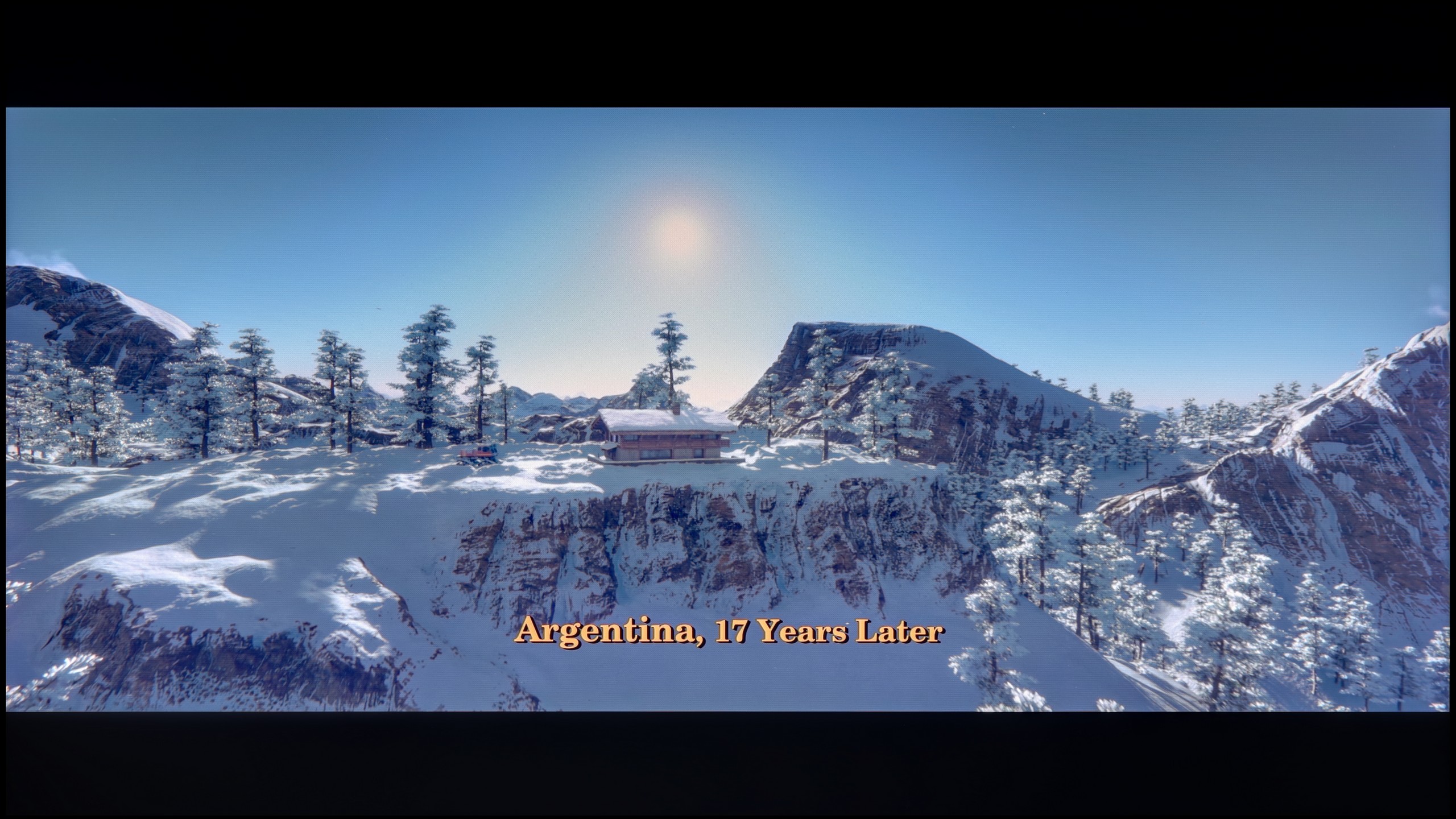










The Samsung QN92D television excels in the fluidity of tonal transitions, giving the image a remarkably natural appearance without visible artefacts. It performs exceptionally well in scenes with complex colour gradations, delivering smooth and uniform transitions. Competing OLED televisions in a similar price range could take note, as the Samsung QN92D provides a quality that rivals even models equipped with QD-OLED panels.
Minor color errors are practically unnoticeable; it is the smoothness of tonal transitions that is a category that even a less experienced viewer will notice. Unfortunate bands and artificial lines can completely ruin the perception of the image. Fortunately, the QN85F handles this aspect almost perfectly. Gradients are smooth, transitions between colors are seamless, and there are no artificial strokes or clear lines separating the hues on the screen. The image remains cohesive, and nothing distracts our attention from the content. Only under very extreme conditions did we notice slight issues in the gray palette, but this is a drawback typical of most televisions and it's hard to consider it a serious downside. In practice, while watching movies, we encountered no problems.
Image scaling and smoothness of tonal transitions
7.2/10
7.5/10
Smooth transition function

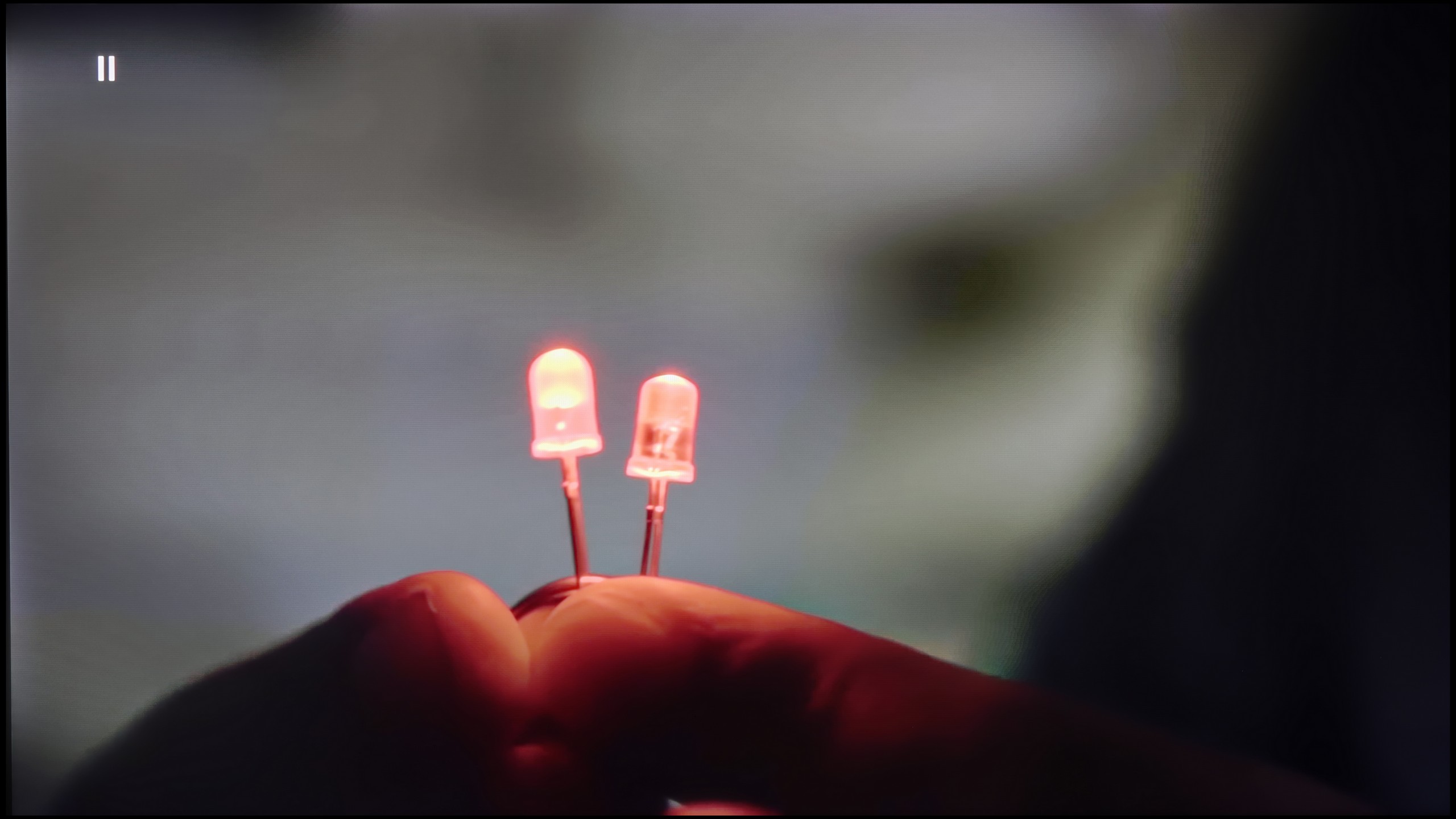
Image without overscan on the SD signal


Let's examine how the Samsung QN92D television manages tonal transitions in low-quality materials. The noise reduction function is highly effective, enhancing the fluidity of tonal transitions even under challenging conditions. However, it’s worth noting that, as with other Samsung televisions, this feature can occasionally remove desirable elements, such as film grain, which may affect image authenticity.
In terms of digital processing, the Samsung QN92D also performs impressively. During testing, the image appeared natural and well-balanced, with details like background branches precisely reproduced, underscoring the television’s ability to enhance the quality of low-resolution materials.
Although the native tonal transitions on the QN85F perform excellently with 4K materials, we don't always deal with content in the highest resolution. That's when it becomes crucial how the television handles upscaling and digital image processing. This process is managed by Samsung's proprietary processor – AI NQ4 Gen2. In practice, it works very efficiently. If visible color banding or other undesirable phenomena appear on the screen, for example in materials from YouTube, they can be easily smoothed out using the "noise reduction" function. Set to medium, it improves tonal transitions while not excessively blurring desired details. However, it's important to remember that – as with most Samsung televisions – this feature significantly affects the film grain. Therefore, during movie screenings, it's advisable to use it cautiously to maintain the natural character of the image.
The upscaling itself looks very good. Test materials in lower resolutions were displayed sharply and clearly, with a lot of detail. The only drawback remains the issue of overscan, which is cutting off the edges of the screen. In most situations, this is not noticeable, but with very old materials below HD quality, there may be instances where part of the image on the left side is slightly cropped.
Blur and motion smoothness
7.5/10
7.7/10

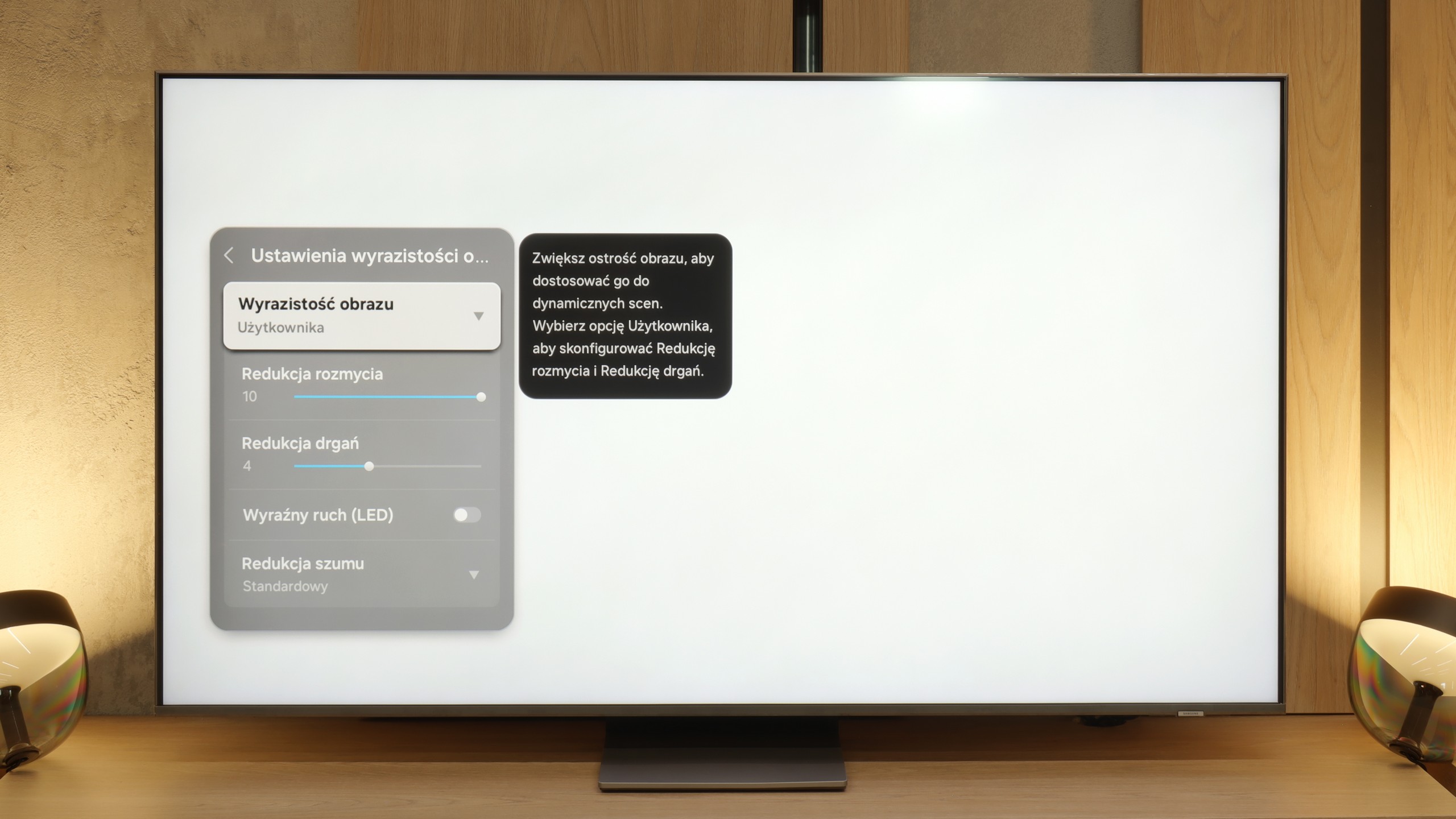
Blur (native resolution, maximum refresh rate):



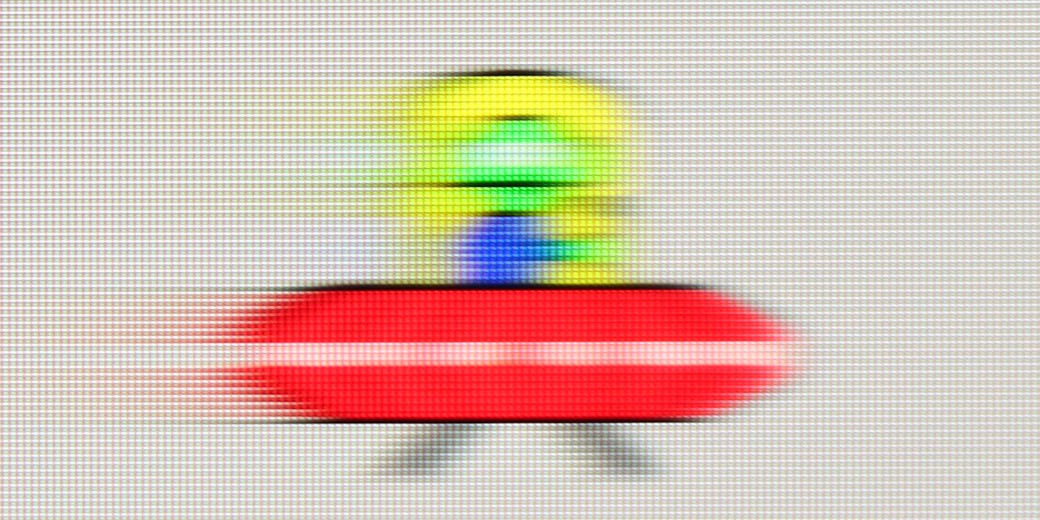
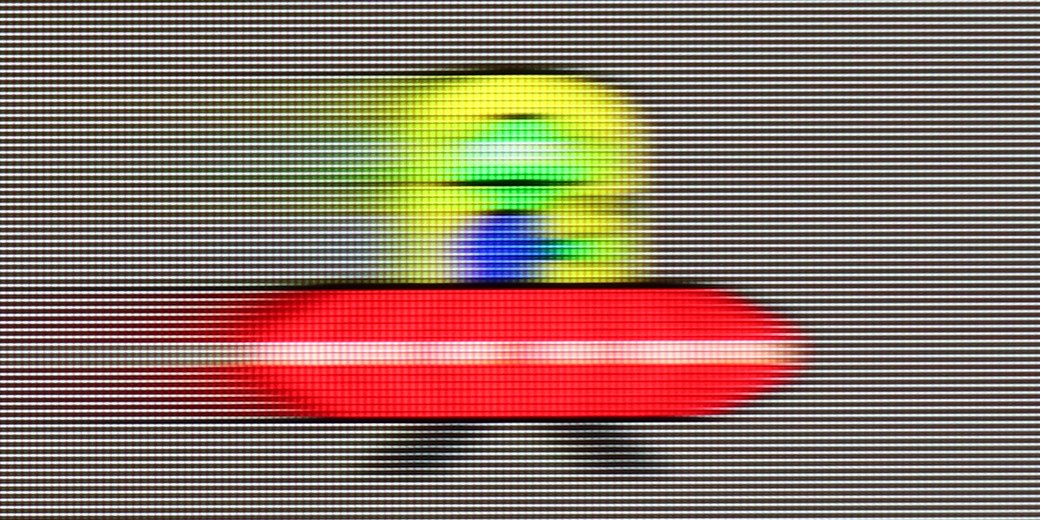
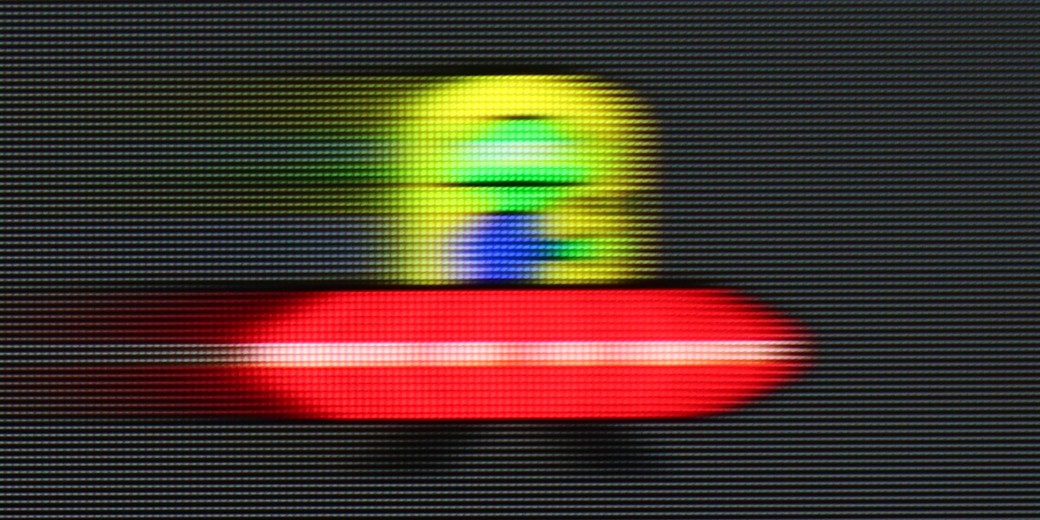
Blur (BFI function enabled):
Image flickers in this mode



Image flickers in this mode



Smużenie ():
Smużenie (4K@144Hz):

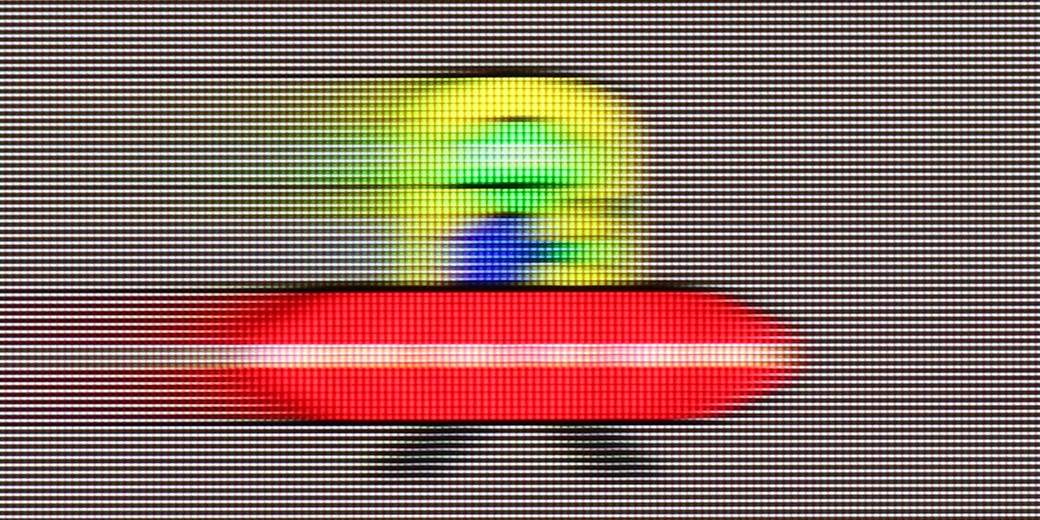
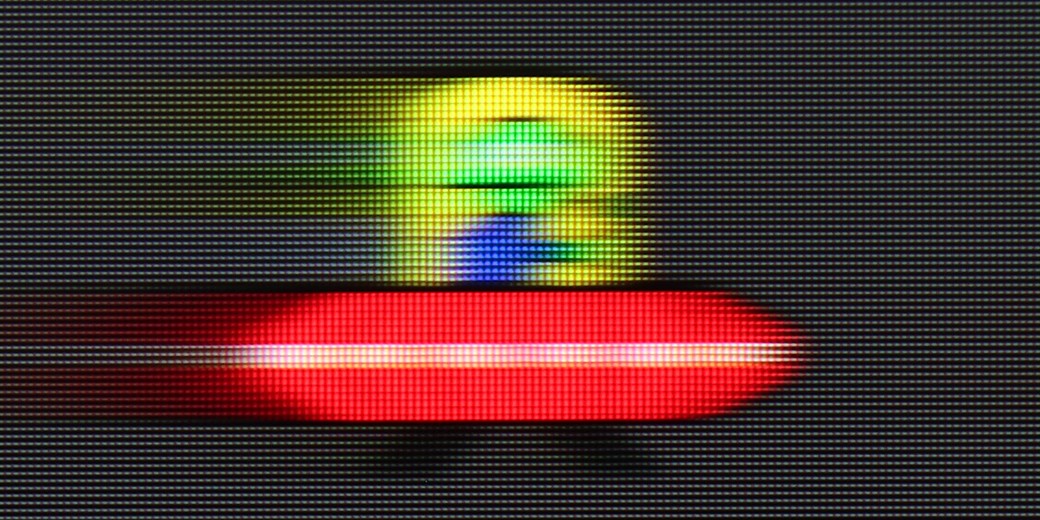
The Samsung QN92D TV features a 144 Hz panel, however, when using the motion smoother, the maximum refresh rate adjusts to 120 Hz. This setup ensures excellent picture quality for both gamers and sports enthusiasts. Additionally, the TV offers a range of image enhancement options, such as the "blur and judder reduction" feature, which lets users fine-tune smoothness on a 10-point scale. Blur reduction sharpens fast-moving objects, while judder reduction smooths out motion, eliminating the "stutter" effect. With these advanced settings, the Samsung QN92D provides optimal visual experiences for dynamic scenes and intense gameplay alike.
The TV performs impressively in terms of motion blur, with minimal issues. The only minor drawback is a slight overshoot effect noticeable on dark backgrounds in our "Ufoludkiem" test. Nonetheless, with its advanced smoothness settings, the Samsung QN92D delivers outstanding performance for both fast-paced scenes and immersive gaming sessions.
Motion blur and fluidity of motion in the QN85F is a topic worth discussing in more detail, as the television is equipped not with a standard 120 Hz panel, but with a 144 Hz panel. The additional hertz will primarily be appreciated by PC gamers, but the mere presence of such an option can be seen as a nice addition and a sign of the times – it’s hard to complain about the trend towards faster panels, since in practice, each of us would like the image to be as fluid as possible. However, the most important thing is how the television handles typical 120 Hz refresh rates – in the case of consoles, sports, or films recorded at 24 or 30 frames per second. And here, the QN85F performs really well. In movies, you can easily adjust the character of the image thanks to the “picture clarity” function, where we find two adjustable sliders. Key for viewing sessions is the one responsible for reducing motion blur. Lower values give the image a more cinematic character with preserved “frame rate,” while higher values lead to a strong smoothing that resembles television theater.
Console compatibility and gaming features
9.5/10
8.2/10
- ALLM
- VRR
- VRR range48 - 144Hz48 - 144Hz
- Dolby Vision Game Mode
- Correct implementation of HGIG
- 1080p@120Hz
- 1440p@120Hz
- 4K@120Hz
- Game bar

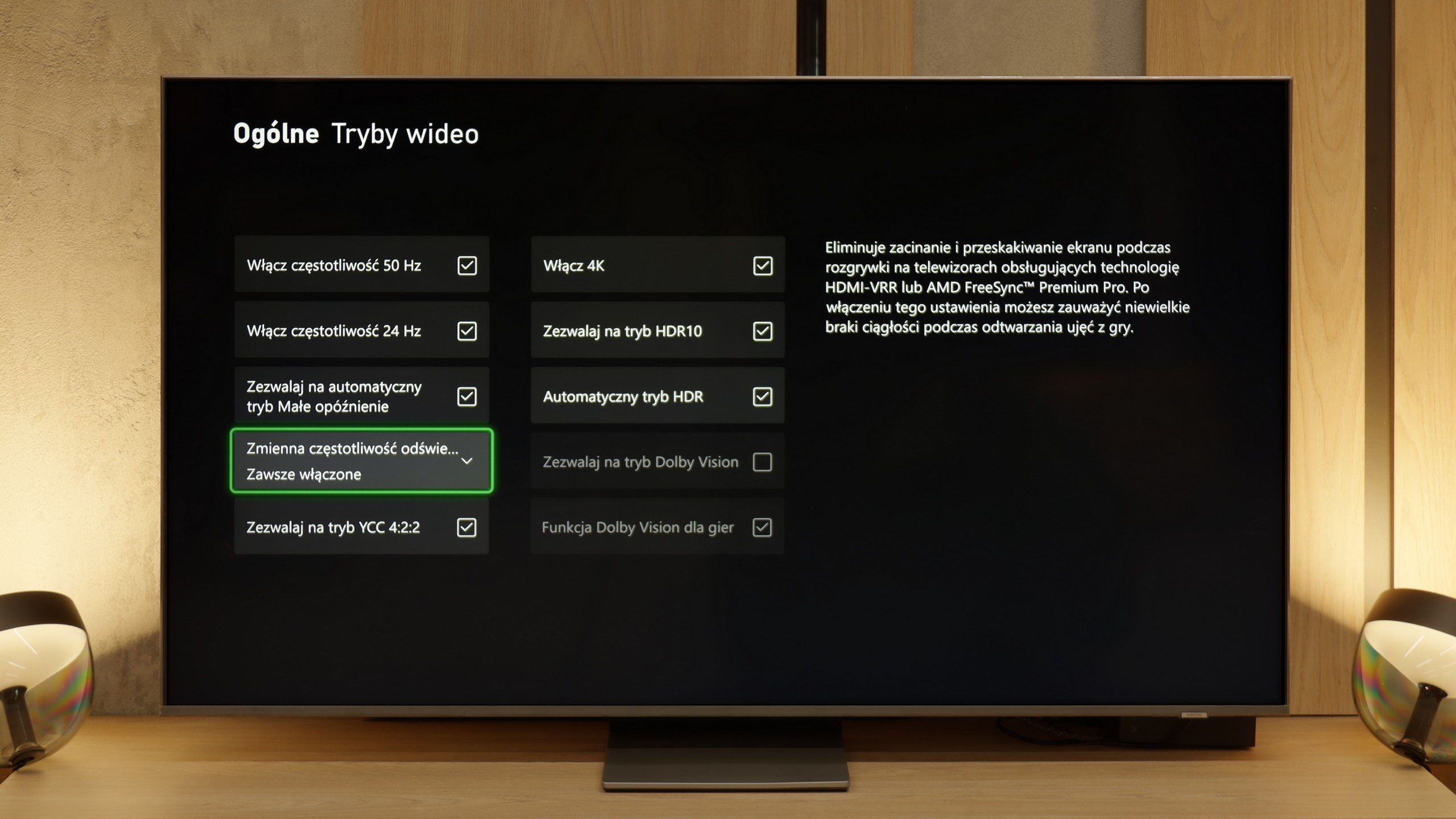

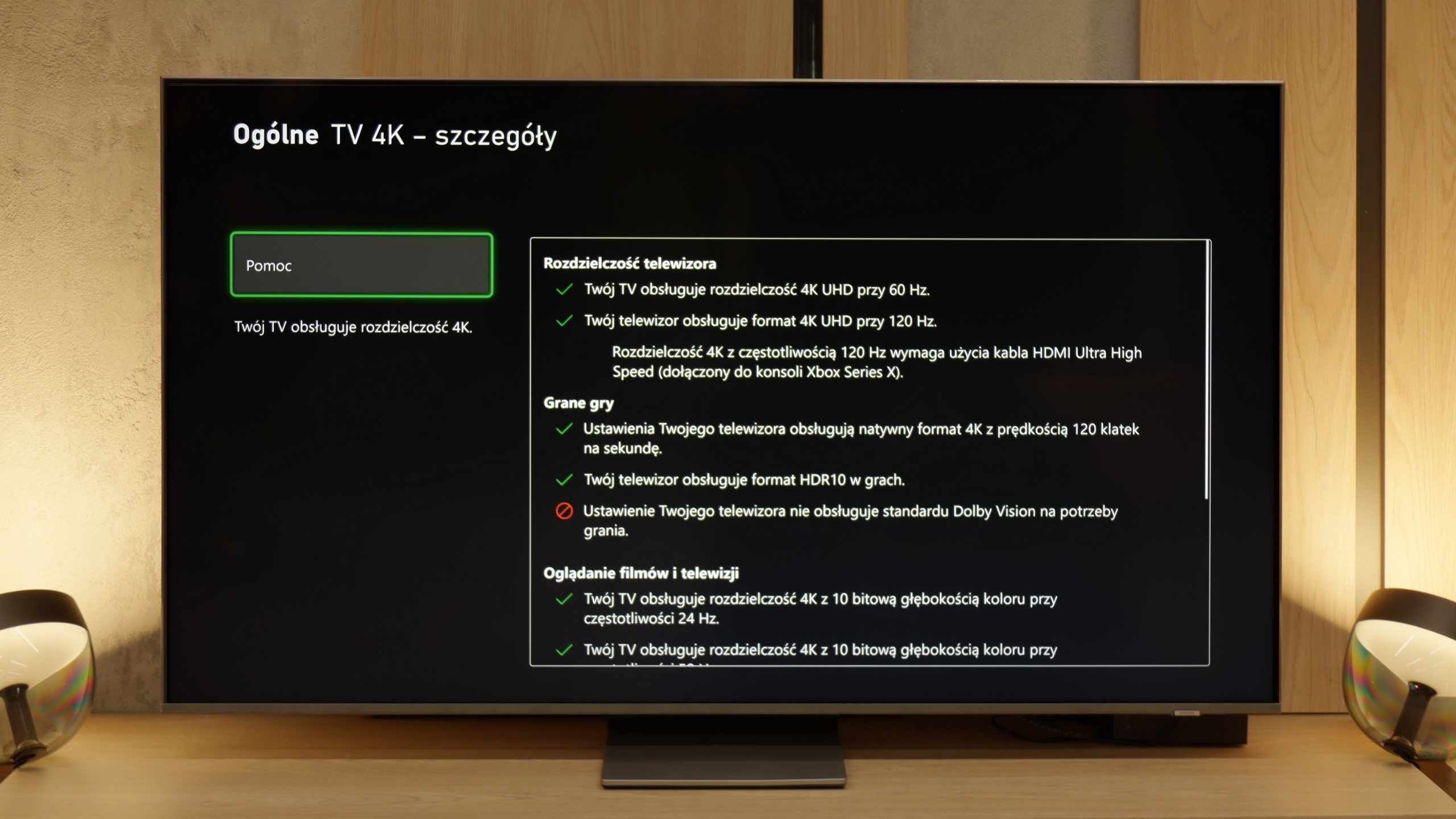

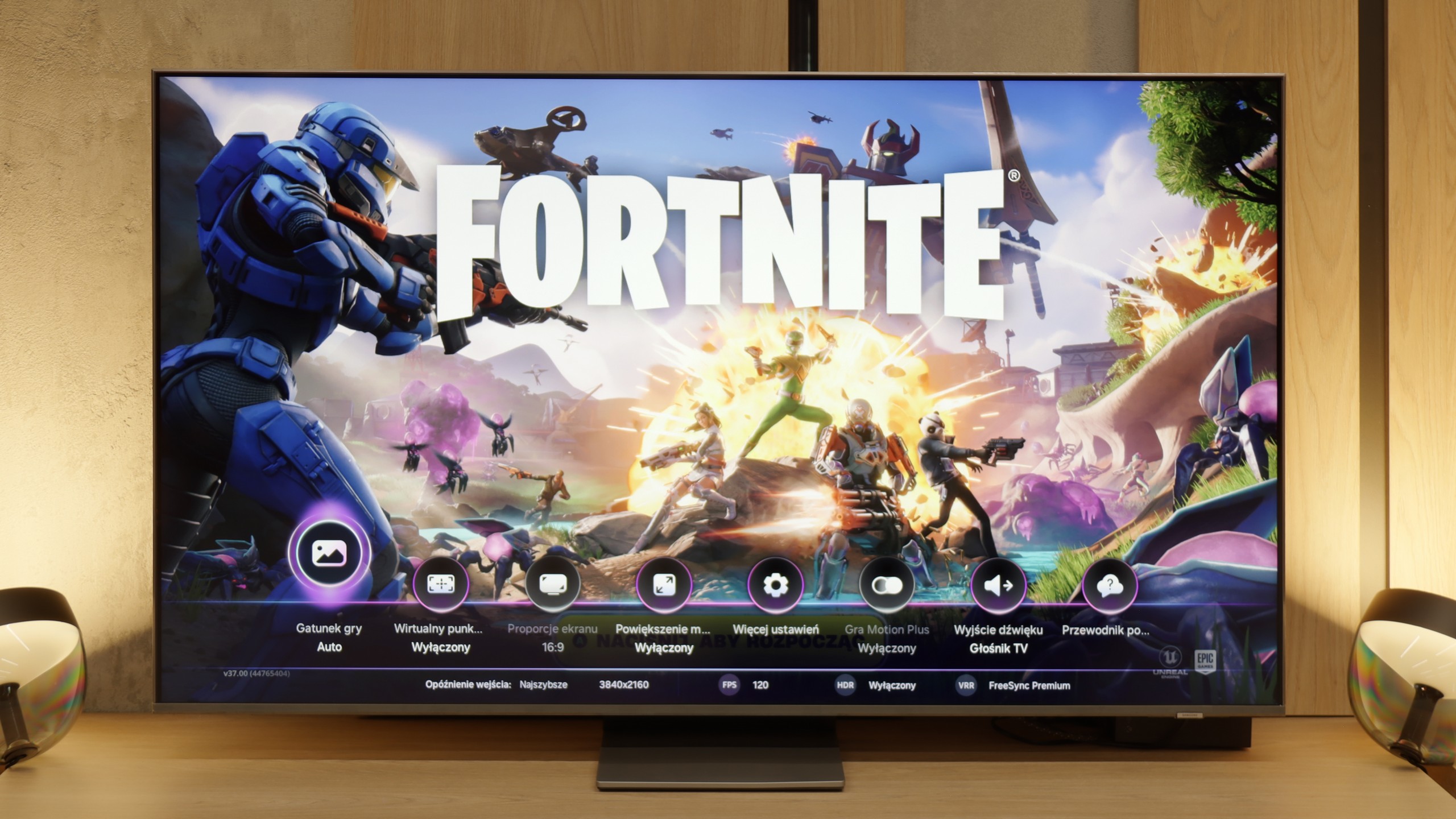

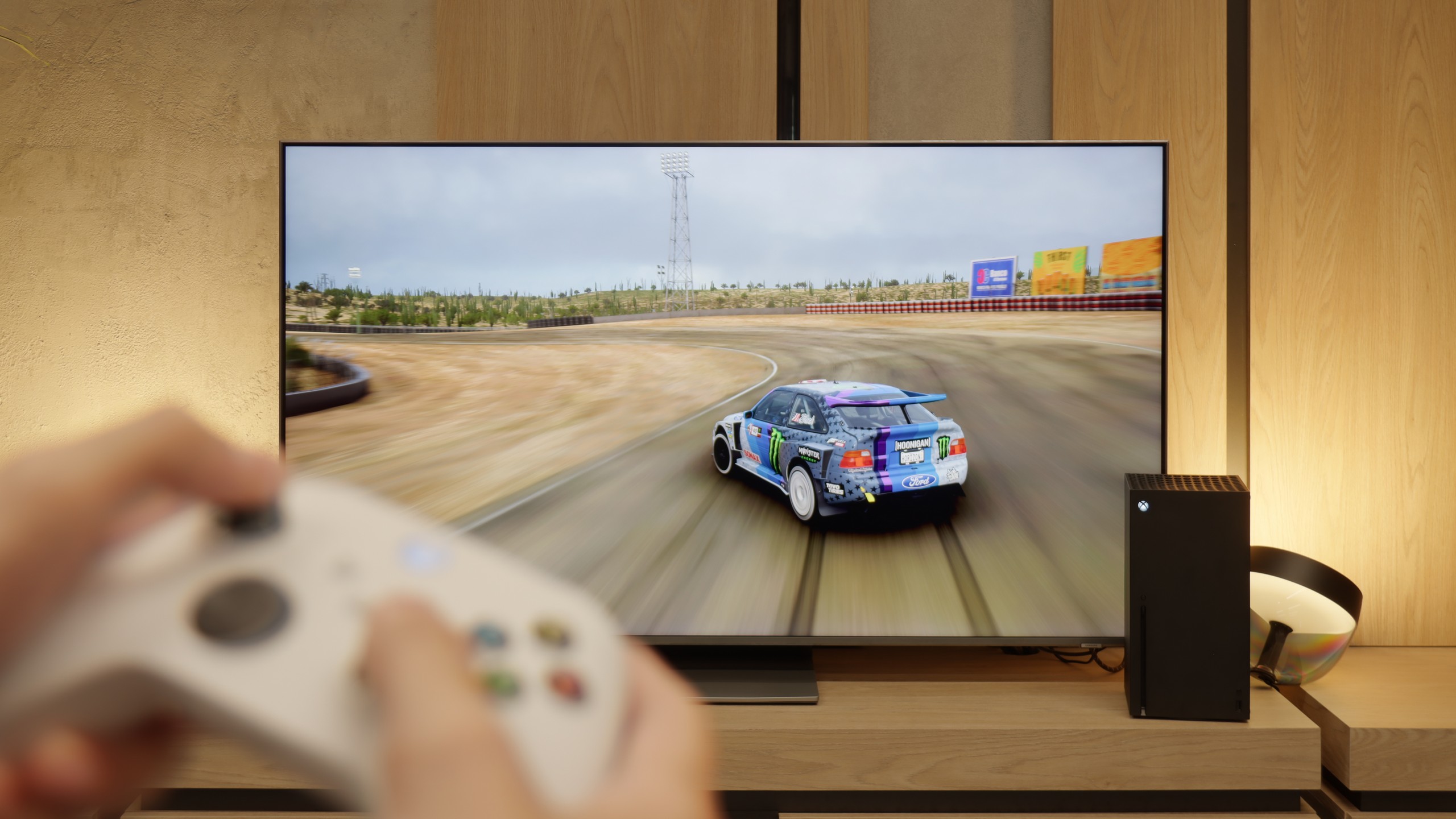
The Samsung QN92/QN90 TV is an outstanding choice for avid gamers and is highly recommended. This model provides virtually every gaming feature currently available, enhancing the excitement of gameplay. A standout feature is the 120 Hz panel, delivering impressive motion smoothness, which is especially beneficial during action-packed games. The TV also boasts low input lag, ensuring quick responses to player commands. Additionally, VRR (Variable Refresh Rate) and ALLM (Auto Low Latency Mode) optimise refresh rates and automatically activate gaming mode, further elevating the gaming experience. An additional bonus is the Xbox app, enabling users to play directly on the TV without needing a console—an exclusive feature in Samsung TVs, adding to their appeal in the gaming world.
Samsung’s Auto Motion Plus Game feature deserves particular praise. This motion smoother is highly effective in gaming, making lower frame rates appear smoother—30 frames per second can look like 45, and 60 Hz can resemble 90 Hz. Crucially, it achieves this without introducing noticeable input lag (keeping it below 25 ms), so gameplay remains highly responsive, unlike many other motion-smoothing options on the market. As a result, players can enjoy a smoother visual experience without sacrificing responsiveness.
The Samsung QN85F makes a really great impression from a gaming feature standpoint. We have four HDMI 2.1 ports here, so we can connect multiple devices simultaneously without any problems. It also has variable refresh rate (VRR), which prevents screen tearing, as well as automatic game mode (ALLM), which allows the TV to switch to the appropriate settings by itself when we launch the console. Additionally, it supports refresh rates of up to 144 Hz – something that PC gamers will particularly appreciate, but the fact that such an option is available shows that Samsung is fully committed to supporting gamers. The Game Bar panel also deserves praise. It provides a quick overview of the most important parameters – from frame rates, to refresh modes, and even shortcuts to picture settings. Instead of digging through the entire menu, we have everything at our fingertips, which turns out to be really convenient in practice. However, the most interesting addition is the Game Motion Plus feature. It’s essentially a motion smoother, adapted for the gaming world. When enabled, the image becomes smoother; sometimes it even looks as though we’re getting a few more frames, and importantly – the response delay doesn’t increase enough to hinder gameplay. This is a solution that truly distinguishes Samsung’s 120Hz TVs from the competition.
The only serious drawback remains the lack of proper HGiG support. This is the standard that ensures correct tone mapping in HDR games, meaning that brightness and contrast are displayed according to how the developers intended them. Without HGiG, we have to manually adjust the brightness, which doesn’t always result in an ideal outcome. The feature was available in previous models, but it disappeared in the QN85F after one of the updates. We hope that Samsung will quickly fix this issue, and we will be keeping an eye out to see if they succeed.
Input lag
9.9/10
9.8/10
SDR
HDR
Dolby Vision
Input lag is a crucial factor for gamers, and the Samsung QN90D excels in this area. With input lag values below 13 ms, the delay between pressing a controller button and the on-screen response is minimal. This low value ensures smooth and responsive gameplay, satisfying both casual gamers and professionals, for whom every millisecond counts. As a result, the Samsung QN92D stands out as an excellent choice for those who prioritise precision and speed in their gaming experience.
The input lag on the QN85F is at a very high level. With content at 120 or 144 Hz, the values often oscillated below 10 ms, which is an absolutely remarkable result. Naturally, when playing at 60 Hz, the lag doubles, but it still remains low enough that in practice it is virtually unnoticeable. Thanks to this, the QN85F will be suitable for both dynamic e-sports games and calmer console titles.
Compatibility with PC
8.6/10
8.4/10

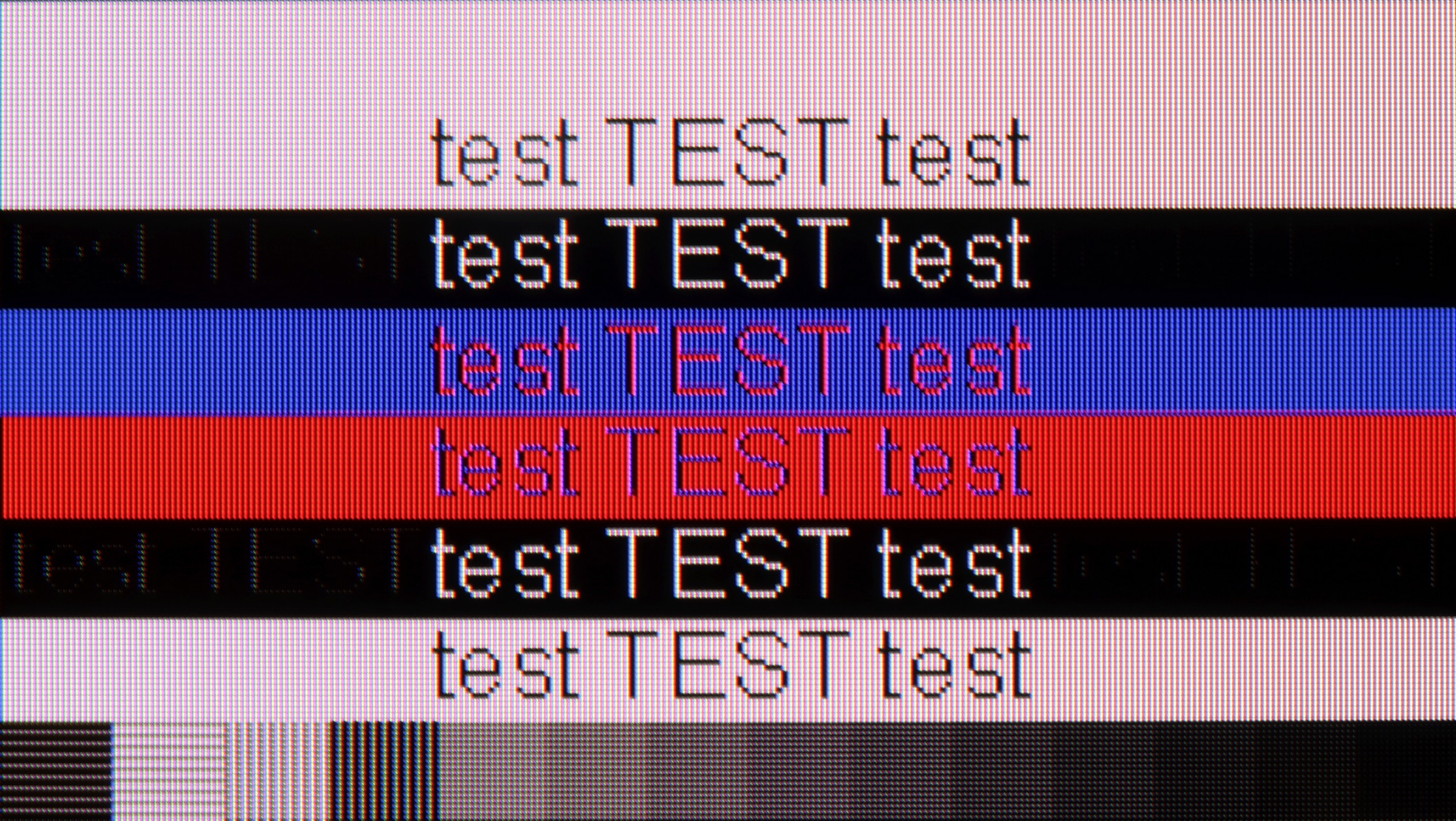
The television stands out for its high performance, supporting chroma 4:4:4 and offering exceptionally low input lag. These features allow users to enjoy fluidity and responsiveness, making it an excellent choice for office work and everyday applications. However, one notable drawback is the poor visibility of horizontal lines on a dark background. On the test pattern on the right, letters appear more like vertical lines, which can be frustrating for some users. Nevertheless, the TV generally works well with computers, providing comfort in performing daily tasks. It is also worth mentioning in this paragraph the "Remote PC" feature, thanks to Microsoft's collaboration with the Korean giant, we can seamlessly pair Windows PCs and use Office 360 applications.
The QN85F performs really well in terms of cooperation with a computer. Thanks to the PC mode with a refresh rate of up to 144 Hz, support for G-Sync, and low input lag, gaming on a personal computer is very enjoyable and should not cause irritation even for more demanding players. The readability of fonts also looks good – the television supports chroma 4:4:4, so standard texts appear sharp and clear. A problem arises only with very thin letters. Regardless of the refresh rate setting – whether it’s 144, 120, or 60 Hz – horizontal, thin lines were hardly visible. Reducing the refresh rate slightly improved the situation, but never enough to say that they were displayed perfectly.
Viewing angles
7.1/10
3.2/10
With VA panel TVs, limited viewing angles are typically expected; however, the Samsung QN90D excels in this area. Thanks to its special coating designed to expand viewing angles, this TV delivers impressive performance rarely seen in devices with VA panels. While VA panels generally fall short in this regard, the QN90D maintains clear and vivid picture quality even when viewed from the side. This makes it an excellent choice for larger rooms and group viewing situations.
The viewing angles on the QN85F are a classic Achilles' heel of most LCD TVs with VA panels. When looking at the screen at an angle, there is a noticeable drop in brightness fairly quickly, and whites begin to gray out while colors lose their intensity. This is the price to pay for the high contrast that this technology offers. Samsung could have aimed for a better coating to widen the viewing angles in this model, but it is not found here. In practice, this means that the best viewing experience will be achieved when sitting directly in front of the TV, and any significant deviation will result in a clear loss of image quality.
TV efficiency during daytime
6.4/10
6.9/10

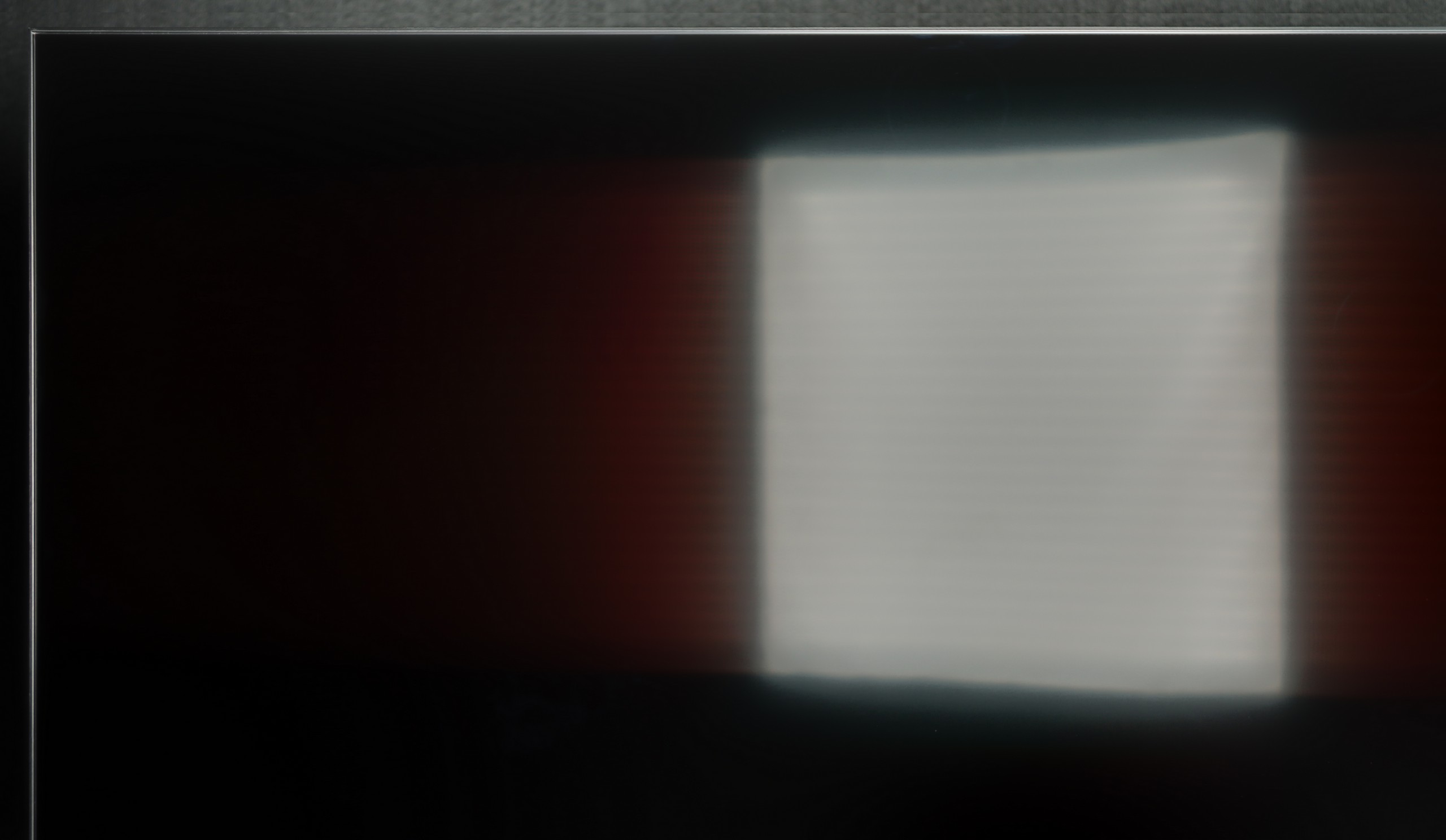


Matrix brightness
Average luminance SDR
Samsung QN85F : 690 cd/m2
Samsung Neo QLED QN90D / QN92D: 629 cd/m2
The TV performs excellently in bright rooms thanks to its high brightness, especially when watching standard television. A constant brightness level of 600 nits ensures excellent visibility even in intense daylight. Unfortunately, despite a satin coating, handling reflections is average, which may affect viewing comfort. An additional downside is the matrix that improves viewing angles, which causes sunlight reflections to spread vertically, potentially further reducing viewing comfort in a bright environment.
QN85F performs excellently during the day. The satin coating of the panel combined with high brightness makes it a television designed for bright rooms. Colors do not lose their intensity, and the image does not wash out even when a lot of light comes in. The television itself is bright enough to handle a living room with large south-facing windows without any problems. Thus, the QN85F provides an image that allows us to watch movies or games during the day without annoying reflections and the feeling that the picture is fading in the sunlight.
Details about the matrix
Subpixel Structure:

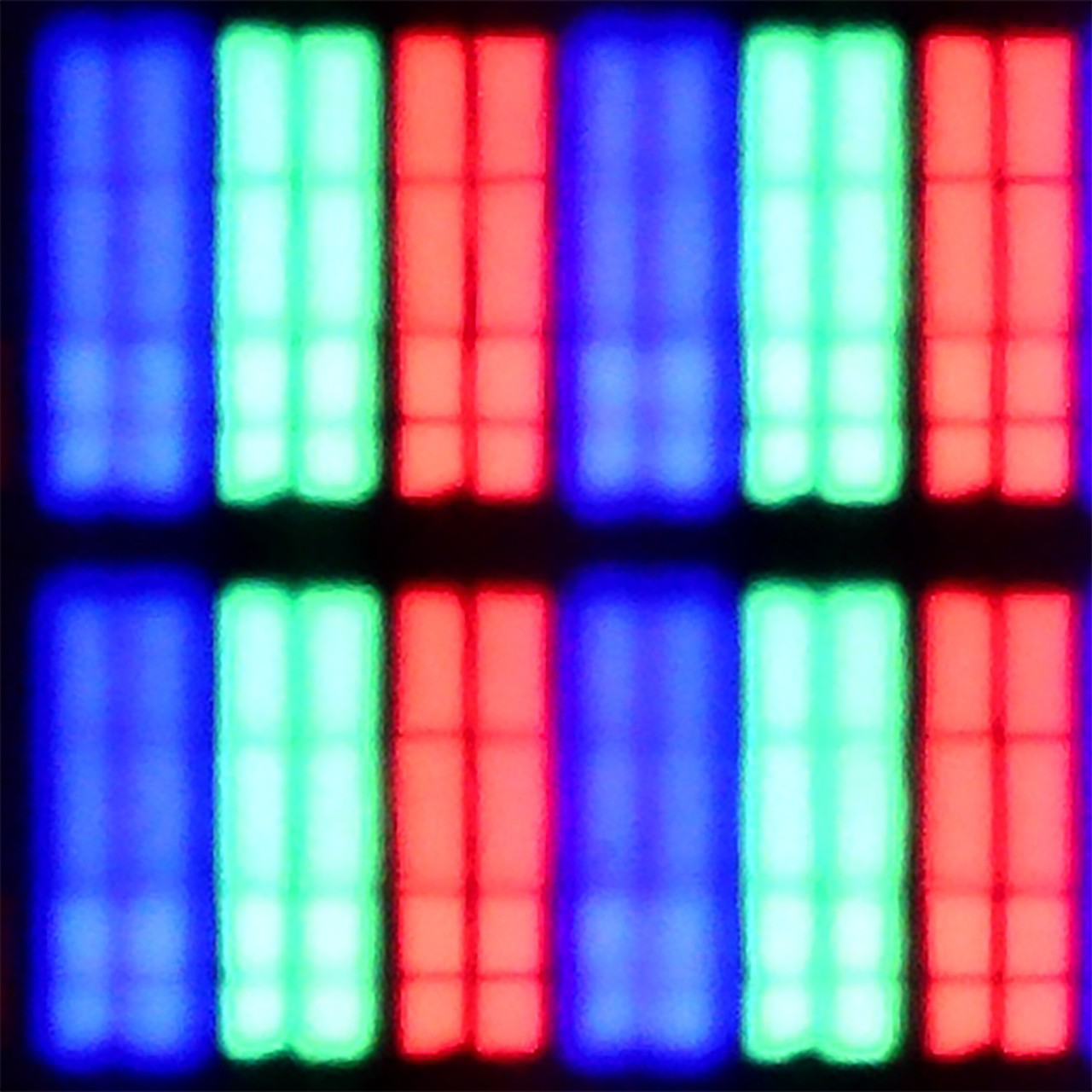
Panel uniformity and thermal imaging:


Samsung Neo QLED QN90D / QN92D
Samsung QN85F
TV features
7.4/10
7.3/10
- HDMI inputs0 x HDMI 2.0, 4 x HDMI 2.1 48Gbps0 x HDMI 2.0, 4 x HDMI 2.1 48Gbps
- OutputsToslink (Optical audio), eARC (HDMI), ARC (HDMI)Toslink (Optical audio), eARC (HDMI), ARC (HDMI)
- Network InterfacesWi-Fi 2.4GHz, Wi-Fi 5GHz, Ethernet (LAN) 100MbpsWi-Fi 2.4GHz, Wi-Fi 5GHz, Ethernet (LAN) 100Mbps
- TV receptionDVB-T, DVB-T2, DVB-S, DVB-S2, DVB-CDVB-T, DVB-T2, DVB-S, DVB-S2, DVB-C
Classic features:
- Recording to USB (terrestrial TV)
- Recording programming
- Picture in Picture (PiP)
- RF remote control (no need to aim at the screen)
- Backlit remote control
- Teletext
- Audio only mode
- Bluetooth headphones support
- Simultaneous Bluetooth headphones & TV audio
Smart features:
- AirPlay
- Screen mirroring (Windows Miracast)
- Voice search
- Voice search in native language
- Ability to connect a keyboard and mouse


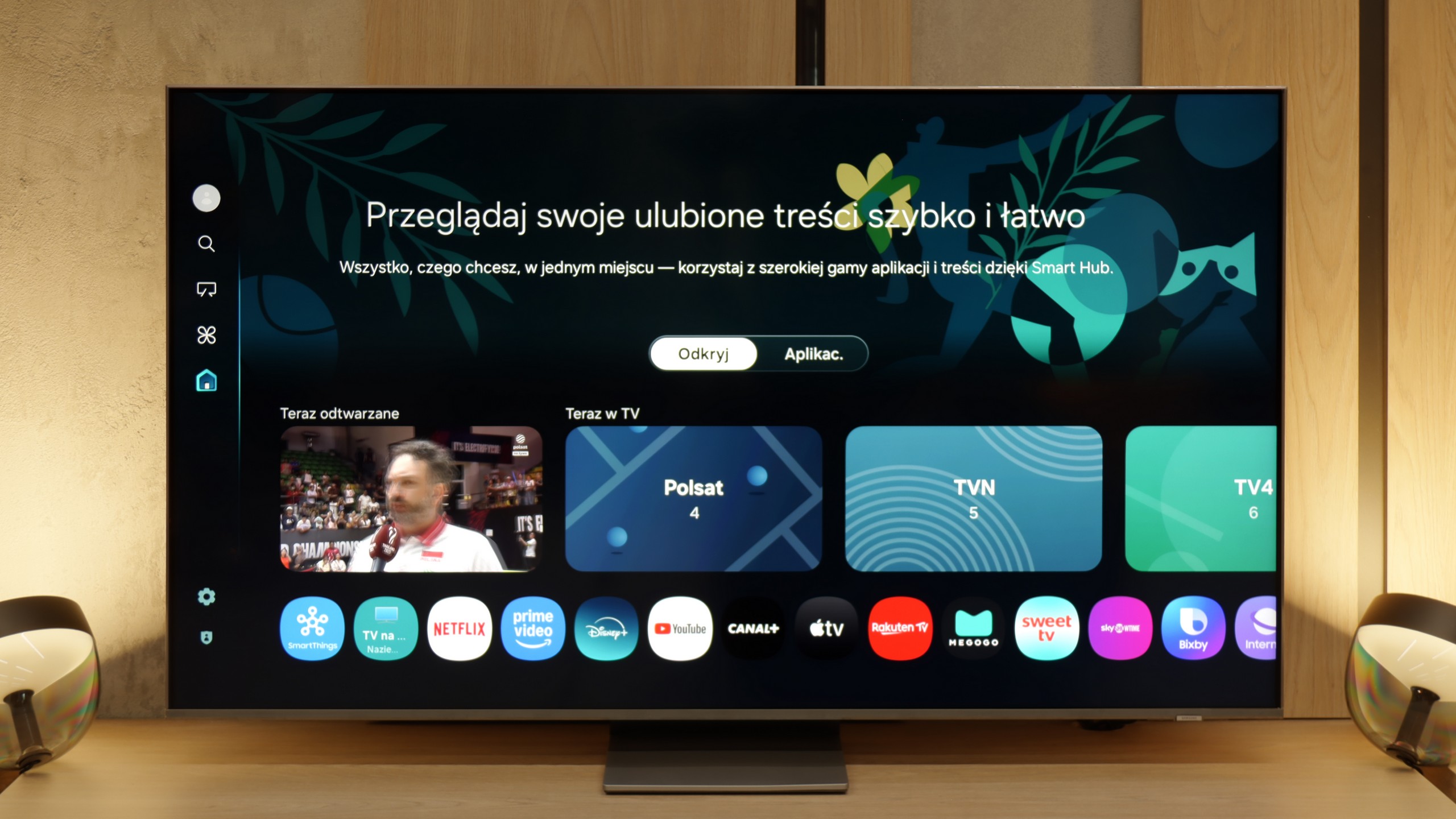
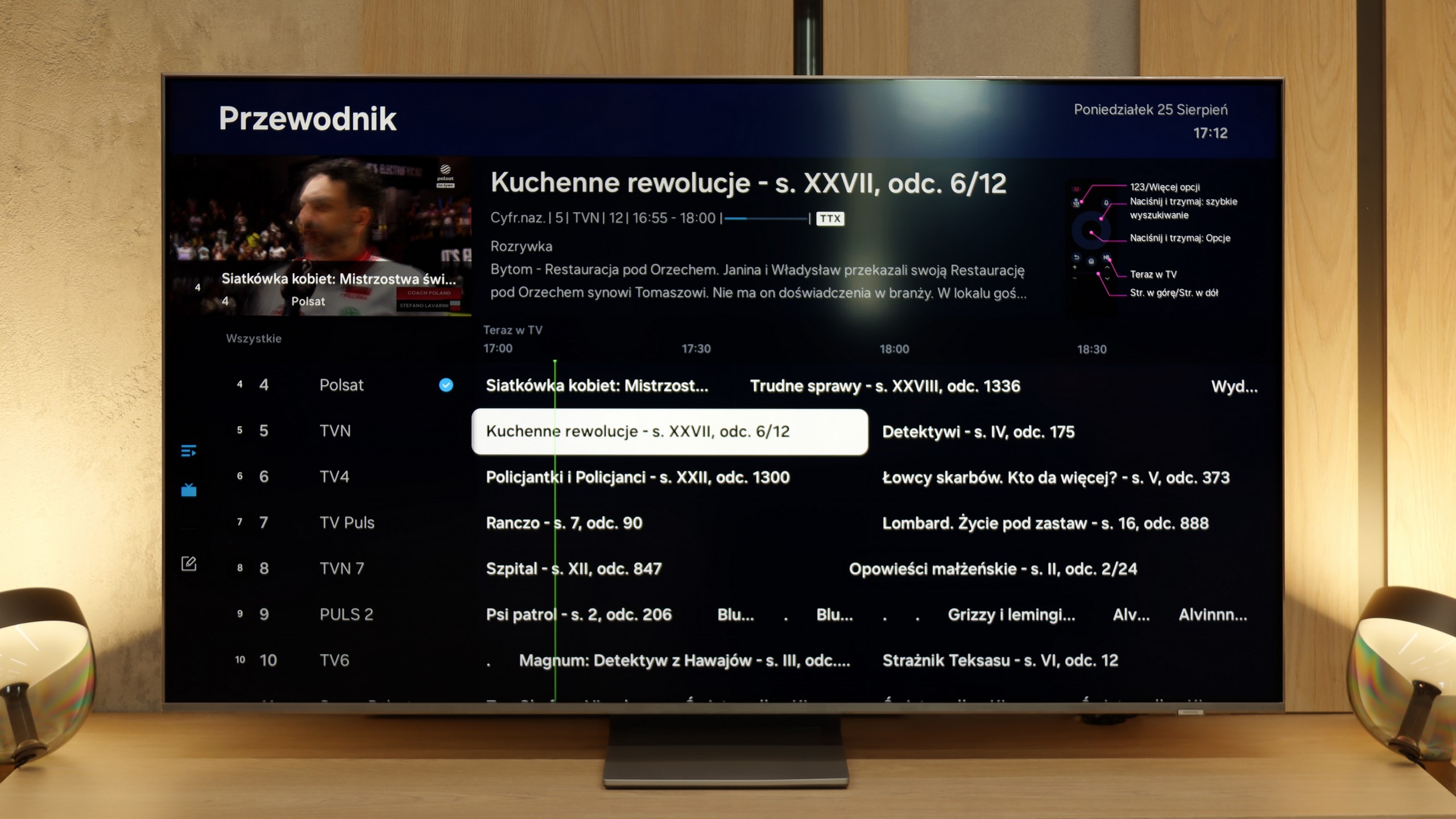
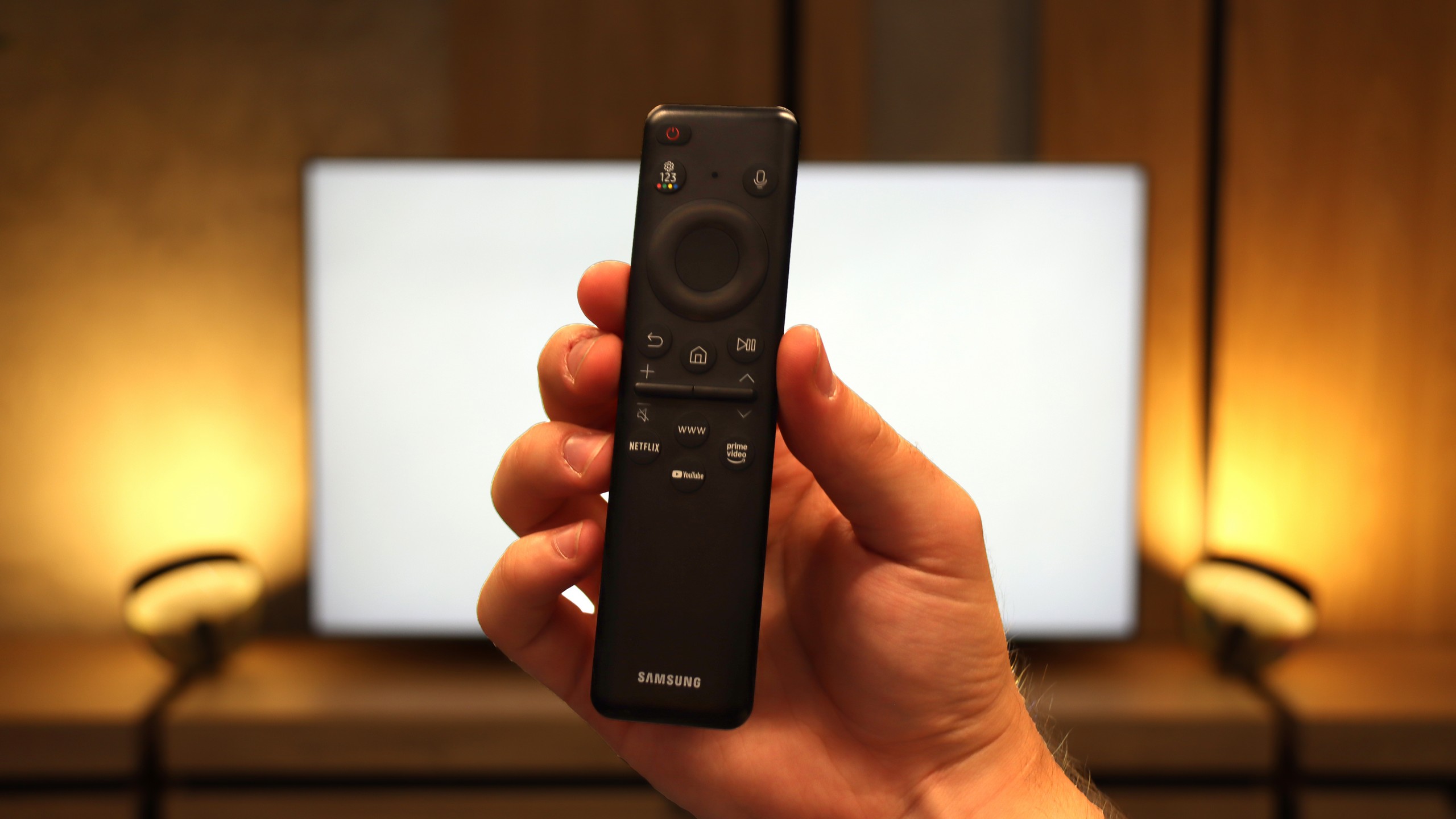
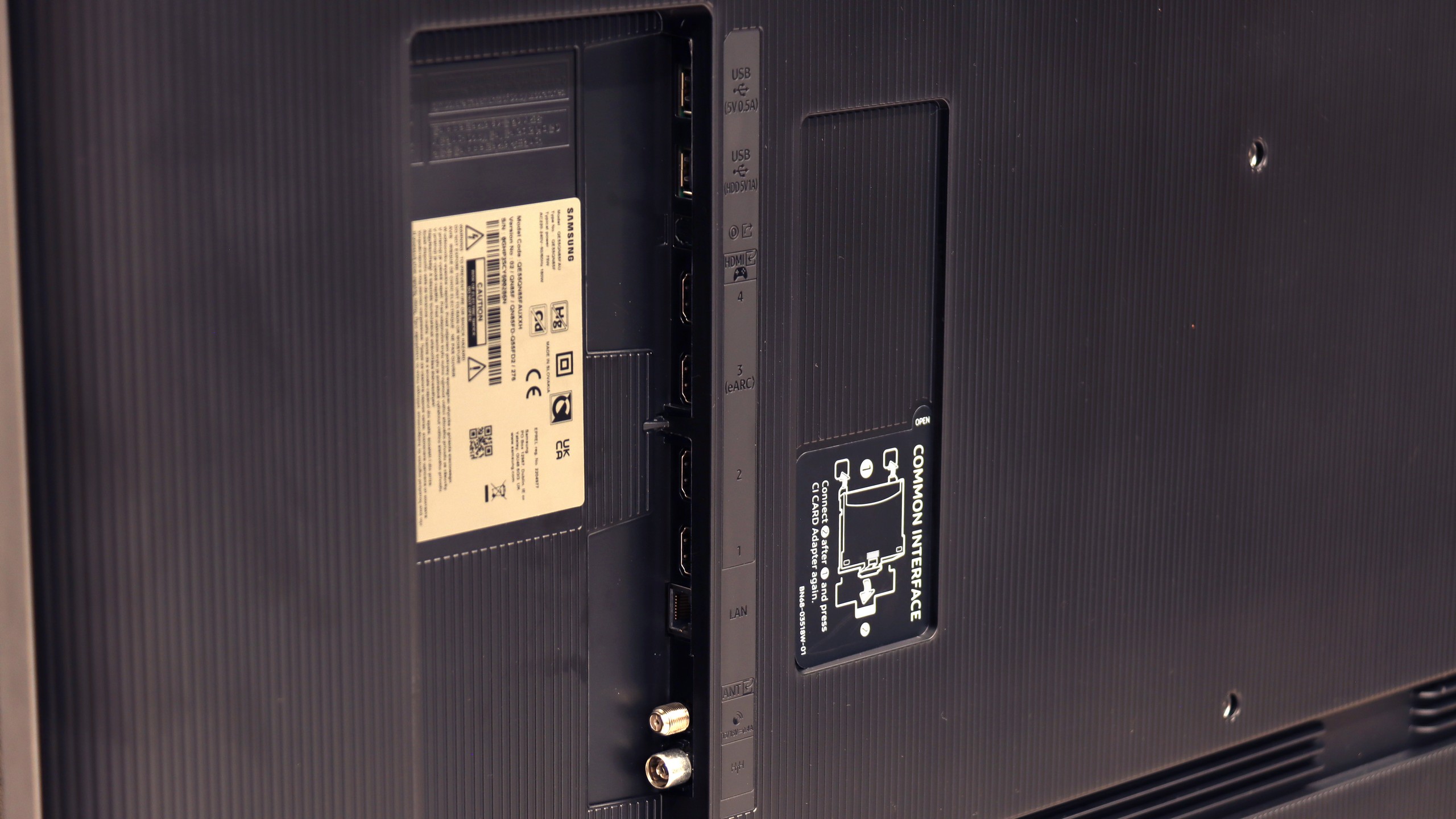
The Samsung QN92D TV impresses with its modern Tizen operating system, offering users a smooth, intuitive, and visually appealing experience. Tizen enables fast and seamless app browsing, enhancing overall ease of use. Its extensive ecosystem makes connecting the QN92D with other devices straightforward. Practical features like controlling set-top boxes with the remote eliminate the hassle of multiple remotes. Apple device users benefit from the AirPlay feature, enabling easy media streaming from an iPhone. Additionally, the remote PC function allows users to operate a computer on the big screen, and the Office 365 app makes the QN92D ideal for both work and entertainment.
Like many Samsung TVs, the QN92D includes an Ambient Mode feature, letting users personalize the display to blend with the surroundings. It can display images or information, making the TV an elegant part of the décor even when turned off. Speaking of aesthetics, the QN92D is notably slim, around 2 cm at its thickest point, with a premium-looking metal frame and a solid, included stand.
However, the QN92D may be slightly lacking for those watching traditional TV, as it doesn’t include a TV program recording feature on the Polish market. Nonetheless, it offers a PiP (Picture-in-Picture) function, allowing viewers to watch two programs simultaneously. The Samsung QN92D is a feature-rich TV that will appeal to gaming enthusiasts and multimedia users alike, seamlessly fitting into modern interiors.
Smart TV and Tizen System
The Samsung QN85F runs on the proprietary Tizen operating system, which has been one of the strongest points of the Korean manufacturer for years. The platform operates quickly, is comprehensive, and provides access to virtually all necessary applications. We have AirPlay support, the ability to mirror the screen, voice search, and a very clear interface. Everything is controlled by a remote with a minimal number of buttons, designed to give us quick access to the most important applications.
Classic TV Features
When it comes to classic television functions, the QN85F offers a rather basic set. The EPG interface is readable and easy to use, resembling a traditional teletext program list. A downside is the lack of USB recording and the absence of PiP functionality, which Samsung offered in many other models. This is because the QN85F uses single tuners. For some people, this may be a drawback, but looking at how few viewers today use traditional linear television, it will not matter much for most users.
SmartThings and Device Support
A strong element of the entire platform is the SmartThings application. With it, we can integrate the television with other home devices—not just those from Samsung. We can connect Philips Hue or Yeelight smart lighting, video intercoms, and many other devices to the system. SmartThings also allows us to control the television without using the traditional remote— we can use the app on our smartphone, mouse mode, or gesture control if we have a Samsung smartwatch. This makes the QN85F part of a larger ecosystem and fits excellently into the trend of the IoT smart home.
Playing files from USB
9.1/10
9.1/10
Supported photo formats:
Maximum photo resolution:

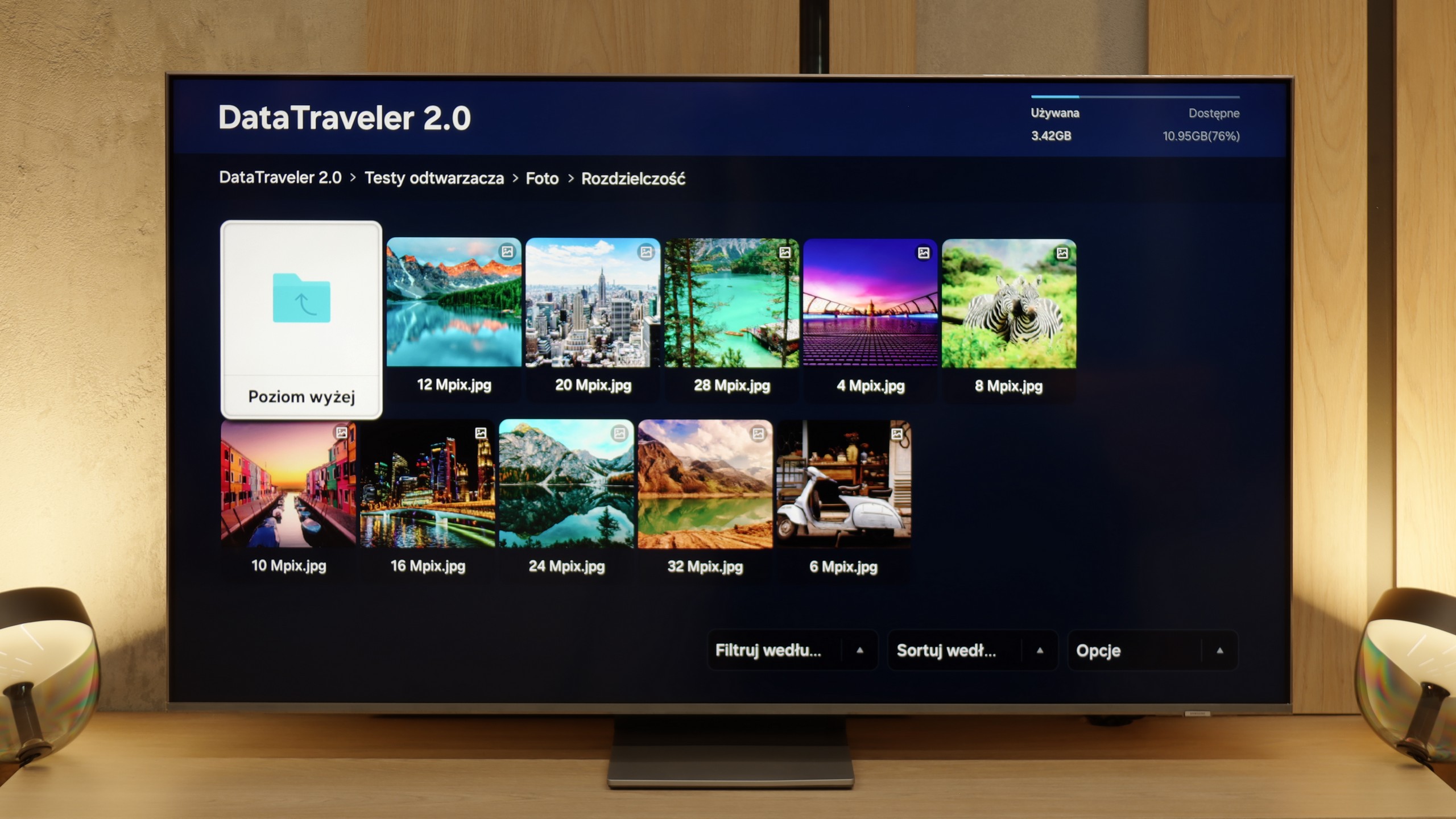
The built-in player in the Samsung QN90D should meet the needs of most users, as it smoothly plays the majority of popular video and audio formats. However, more discerning users may find a few limitations. Notably, it does not support HEIC photo format—a common format on Apple devices—nor does it accommodate several other, less widely used image formats.
The player in the QN85F works as most people expect, supporting virtually all popular formats and is sufficiently capable even for more demanding users. Movies, music, photos – everything launches without issues. The only hiccup occurs with HEIC files, which are images from Apple devices. According to the specifications, they should work, but in practice, they simply do not open. Thumbnails are visible, but the file itself refuses to launch. This seems to be just a regular software bug. Apart from that one case, the player performs well and gives no reasons for complaints.
Apps
8.7/10
8.7/10














































Sound
6.9/10
7.6/10
- Maximum volume-84dB
- Dolby Digital Plus 7.1
- Dolby True HD 7.1
- Dolby Atmos in Dolby Digital Plus (JOC)
- Dolby Atmos in Dolby True HD
- DTS:X in DTS-HD MA
- DTS-HD Master Audio
The TV shares a similar speaker setup with the QN95, configured as a 4.2.2 system with a total output of 70W (except for the 50" model, which uses a 2.2 configuration, and the 43" model with a 2.0 setup). Despite its slim design, the TV delivers a loud, clear sound with a well-balanced audio profile. As with other Samsung models, the lack of DTS format support results in a slight deduction. Notably, it includes Samsung's proprietary Q-Symphony feature, enabling seamless sound synchronization with a compatible Samsung soundbar.
The Samsung QN85F is equipped with a 2.2 system with a power of 40 W and performs really well for built-in speakers. The bass is pleasant, and the dialogues are clear and easy to hear even during louder scenes. Even at maximum volume, the television does not produce any unwanted vibrations, and nothing creaks. At the bottom of the housing, there is a subwoofer responsible for the bass, so it’s important to ensure that it is not obstructed during installation.
As for formats, the QN85F does not support DTS:X audio, which for Samsung has been a standard for several years now, forcing Blu-ray enthusiasts to connect audio devices first to the home theater and then to the television. In return, however, we get support for the more popular Dolby Atmos format, which can add extra space to the sound in movies and series.
Acoustic Measurements
No acoustic data
84dBC (Max)
75dBC


